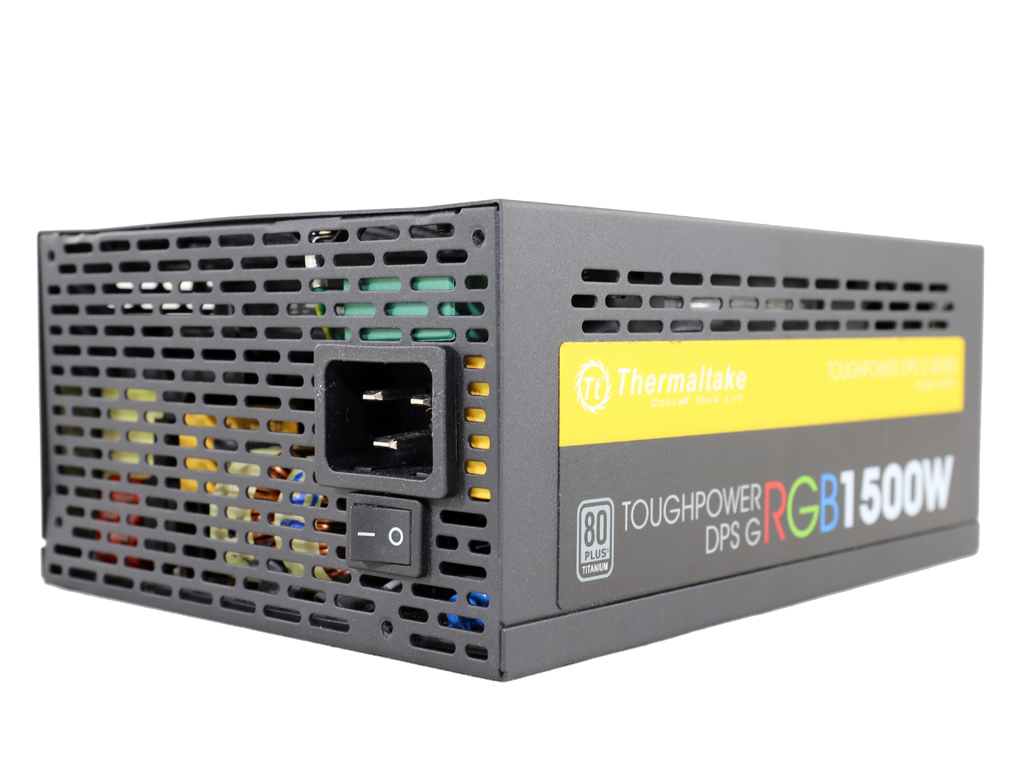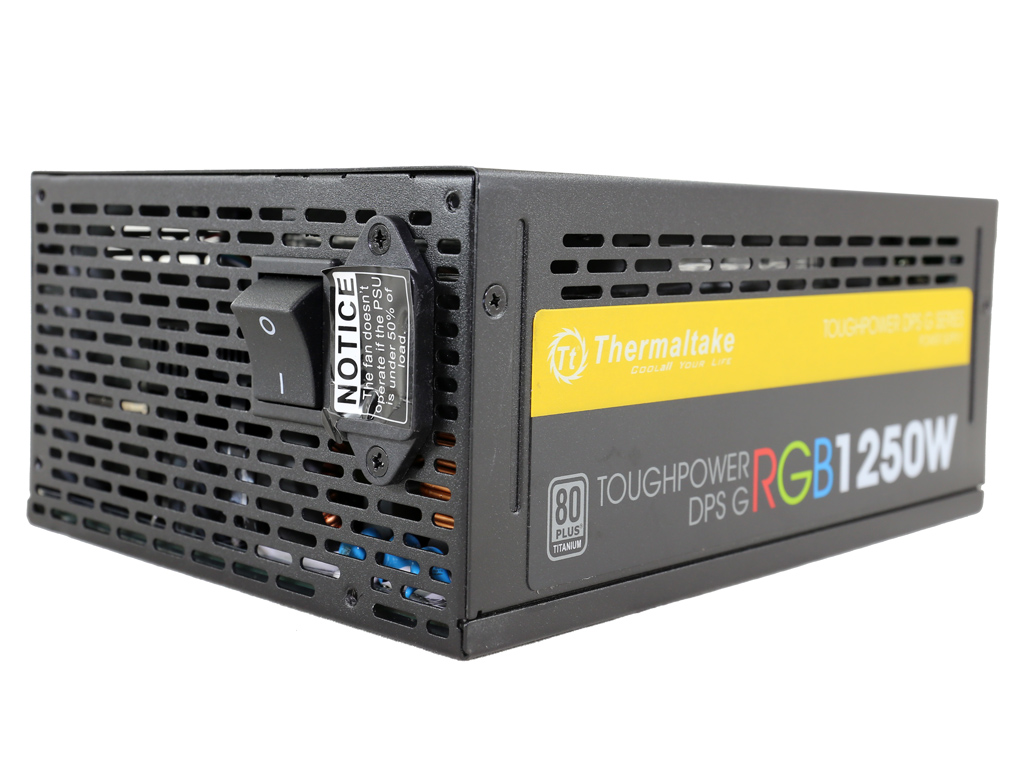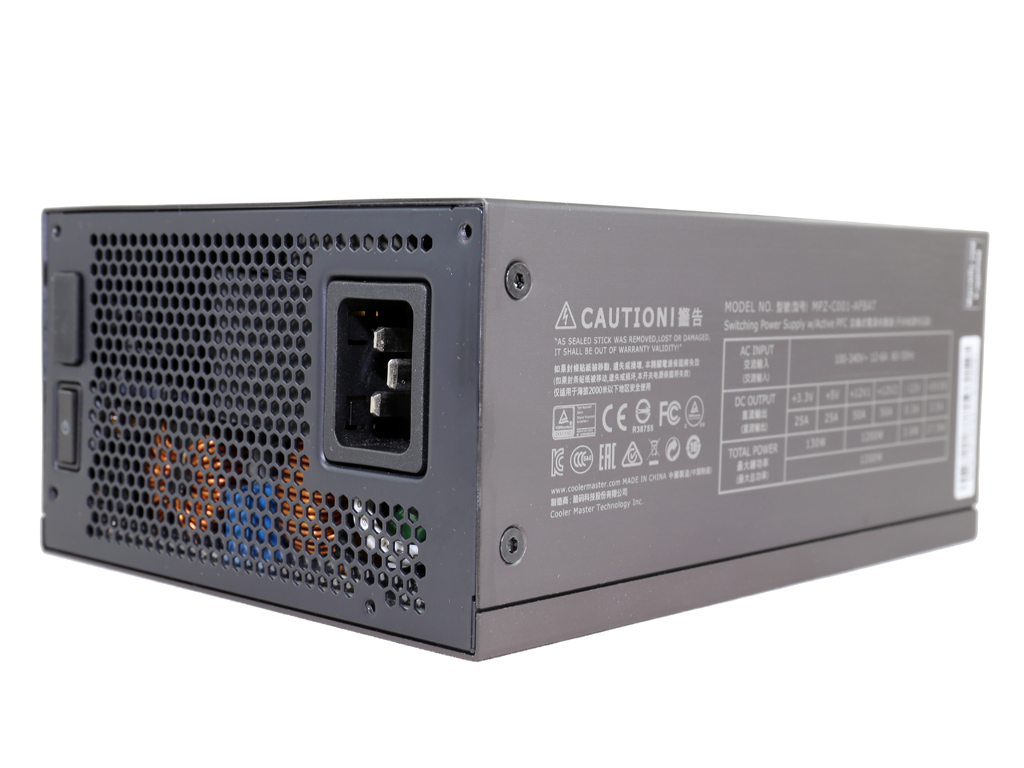Thermaltake Toughpower DPS G RGB 1500W PSU Review
Why you can trust Tom's Hardware
Load Regulation, Hold-Up Time, And Inrush Current
To learn more about our PSU tests and methodology, please check out How We Test Power Supply Units.
Primary Rails And 5VSB Load Regulation
Load Regulation testing is detailed here.
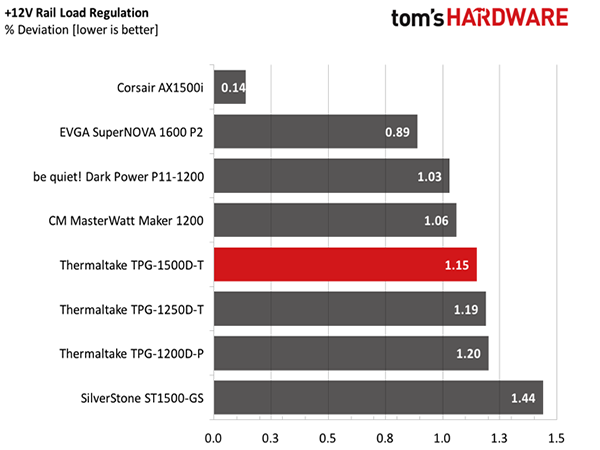
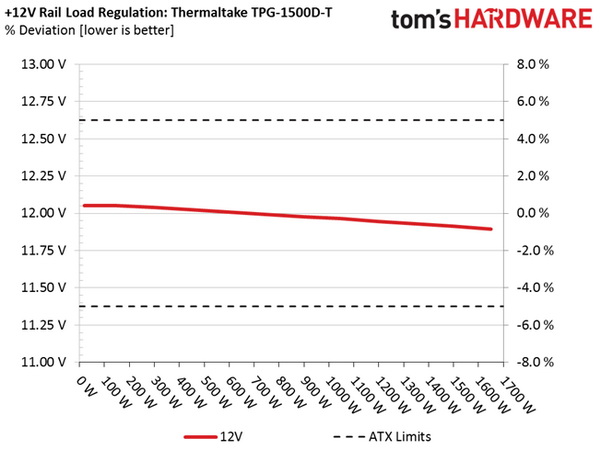
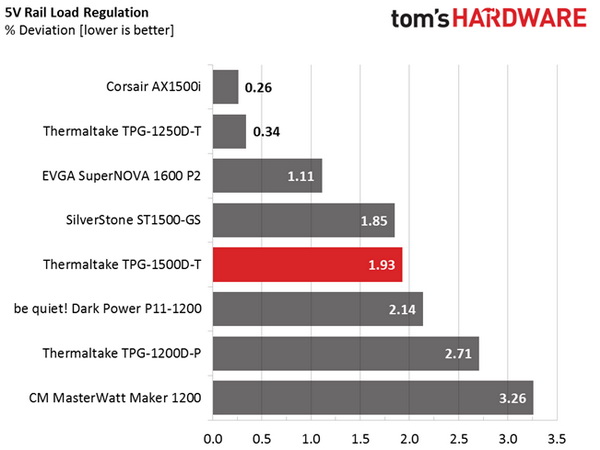
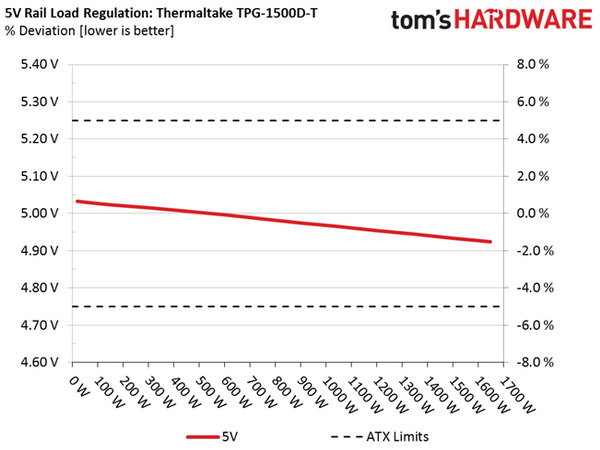
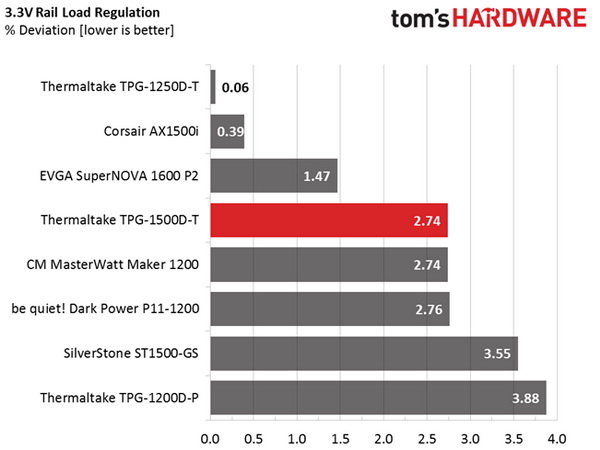
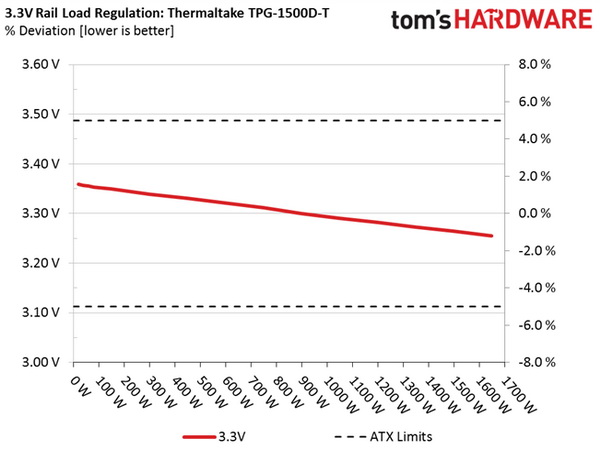
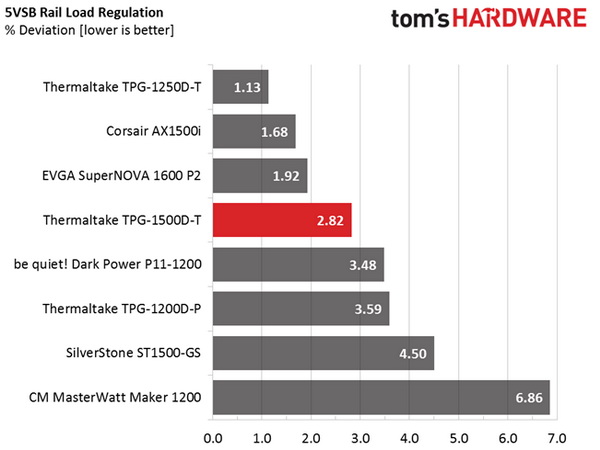
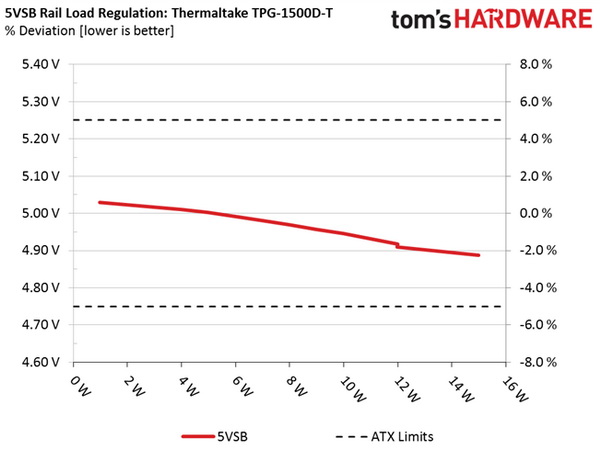
Hold-Up Time
Our hold-up time tests are described in detail here.
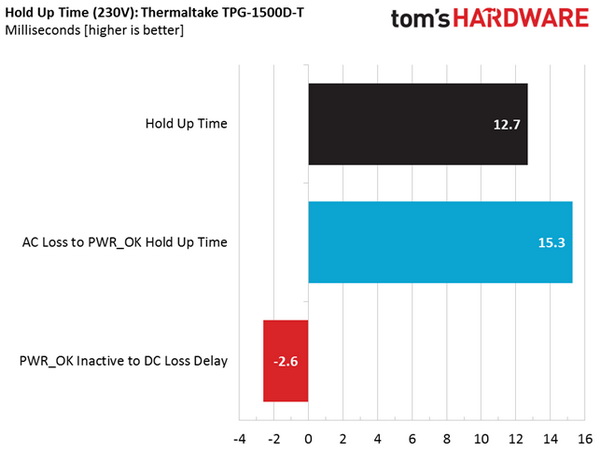
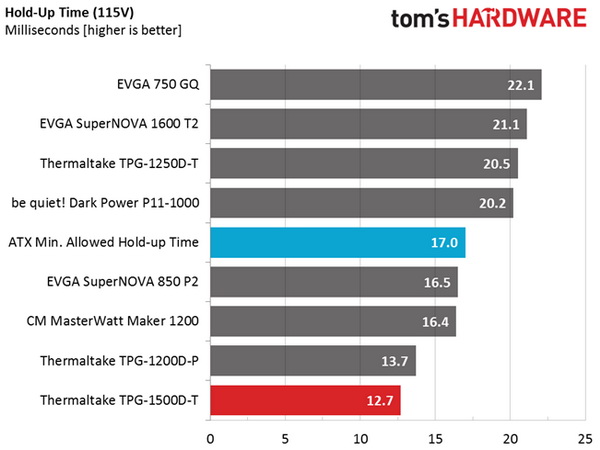
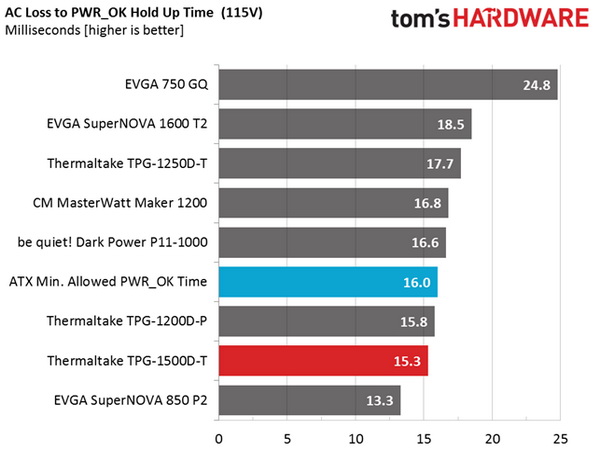
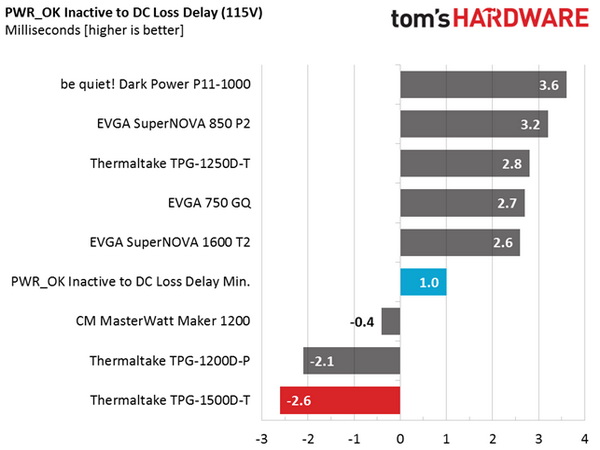
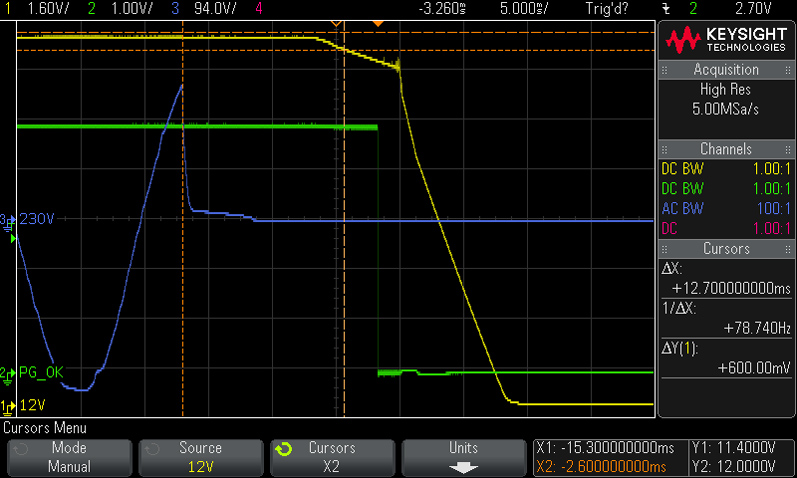

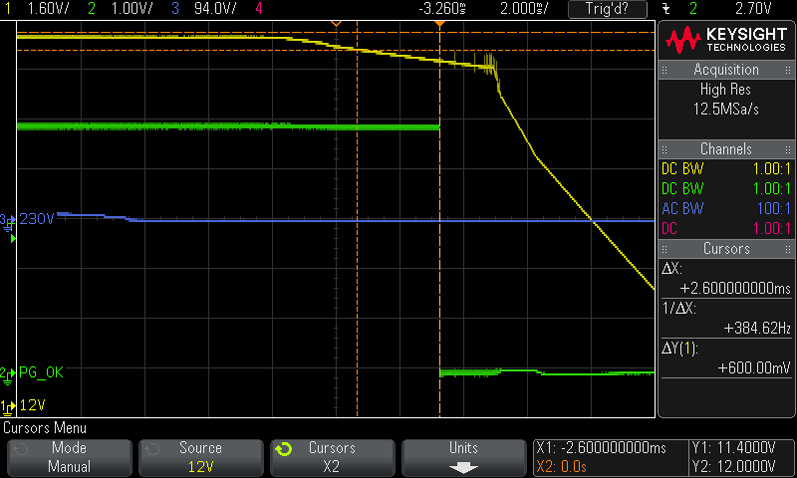
The hold-up time we measured is less than 17 ms, and the power-good signal lasts longer, meaning that it drops while the rails are already out of spec. This is something we hate to see, especially in high-end and expensive PSUs like the TPG-1500D-T. According to Thermaltake, the hold-up time is 16 ms at 70% of full load, so even theoretically this power supply fails to satisfy the ATX spec's requirements.
Inrush Current
For details on our inrush current testing, please click here.

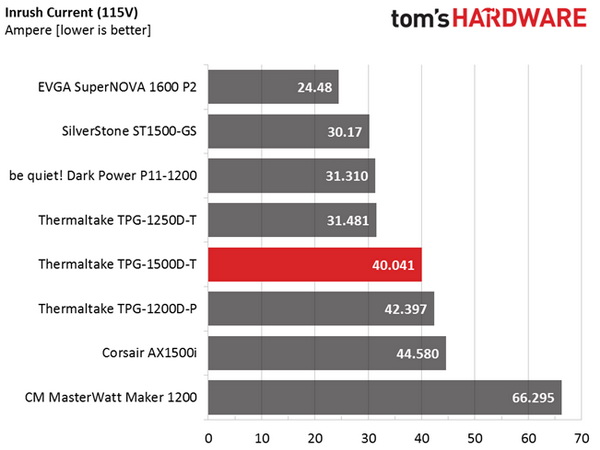
The inrush current is low with both voltage inputs. This is a nice surprise given the bulk caps' high capacity. Apparently, the NTC thermistor, along with the bypass relay, do a pretty good job restricting the inrush currents during the PSU's start-up phase while the bulk caps are completely discharged.
Load Regulation And Efficiency Measurements
The first set of tests reveals the stability of the voltage rails and the PSU's efficiency. The applied load equals (approximately) 10 to 110 percent of the maximum load the supply can handle, in increments of 10 percentage points.
Get Tom's Hardware's best news and in-depth reviews, straight to your inbox.
We conducted two additional tests. During the first, we stressed the two minor rails (5V and 3.3V) with a high load, while the load at +12V was only 0.1 A. This test reveals whether a PSU is Haswell-ready or not. In the second test, we determined the maximum load the +12V rail could handle with minimal load on the minor rails.
| Test # | 12V | 5V | 3.3V | 5VSB | DC/AC (Watts) | Efficiency | Fan Speed | Fan Noise | Temps (In/Out) | PF/AC Volts |
|---|---|---|---|---|---|---|---|---|---|---|
| 1 | 10.633A | 1.993A | 1.970A | 0.995A | 149.75 | 90.33% | 896 RPM | 30.2 dB(A) | 42.36 °C | 0.958 |
| 12.053V | 5.024V | 3.350V | 5.003V | 165.79 | 45.62 °C | 115.1V | ||||
| 2 | 22.327A | 2.989A | 2.962A | 1.201A | 299.65 | 93.25% | 896 RPM | 30.2 dB(A) | 42.98 °C | 0.974 |
| 12.038V | 5.015V | 3.339V | 4.992V | 321.34 | 47.48 °C | 115.1V | ||||
| 3 | 34.396A | 3.499A | 3.479A | 1.404A | 449.64 | 93.55% | 896 RPM | 30.2 dB(A) | 43.23 °C | 0.982 |
| 12.023V | 5.006V | 3.331V | 4.980V | 480.63 | 49.29 °C | 115.1V | ||||
| 4 | 46.501A | 4.006A | 3.971A | 1.608A | 599.53 | 93.33% | 896 RPM | 30.2 dB(A) | 43.65 °C | 0.984 |
| 12.007V | 4.996V | 3.321V | 4.969V | 642.38 | 51.74 °C | 115.1V | ||||
| 5 | 58.282A | 5.011A | 4.979A | 1.814A | 749.33 | 92.90% | 896 RPM | 30.2 dB(A) | 44.07 °C | 0.988 |
| 11.991V | 4.986V | 3.312V | 4.956V | 806.58 | 53.53 °C | 115.1V | ||||
| 6 | 70.084A | 6.033A | 5.999A | 2.020A | 899.27 | 91.62% | 1320 RPM | 41.1 dB(A) | 45.44 °C | 0.990 |
| 11.978V | 4.975V | 3.300V | 4.945V | 981.58 | 55.21 °C | 115.1V | ||||
| 7 | 81.920A | 7.046A | 7.022A | 2.229A | 1049.09 | 90.83% | 1704 RPM | 45.0 dB(A) | 46.75 °C | 0.991 |
| 11.963V | 4.965V | 3.290V | 4.932V | 1155.01 | 55.98 °C | 115.2V | ||||
| 8 | 93.816A | 8.078A | 8.044A | 2.438A | 1199.04 | 90.02% | 1976 RPM | 49.4 dB(A) | 46.94 °C | 0.992 |
| 11.945V | 4.954V | 3.282V | 4.917V | 1332.01 | 56.47 °C | 115.2V | ||||
| 9 | 106.168A | 8.598A | 8.584A | 2.440A | 1349.17 | 89.22% | 2160 RPM | 51.1 dB(A) | 47.76 °C | 0.993 |
| 11.930V | 4.944V | 3.273V | 4.909V | 1512.18 | 57.72 °C | 115.2V | ||||
| 10 | 118.288A | 9.121A | 9.096A | 3.066A | 1498.96 | 88.45% | 2160 RPM | 51.1 dB(A) | 48.84 °C | 0.993 |
| 11.914V | 4.934V | 3.264V | 4.887V | 1694.69 | 60.21 °C | 116.4V | ||||
| 11 | 131.081A | 9.141A | 9.122A | 3.076A | 1648.91 | 87.54% | 2184 RPM | 51.3 dB(A) | 44.12 °C | 0.994 |
| 11.895V | 4.924V | 3.255V | 4.877V | 1883.71 | 57.03 °C | 115.1V | ||||
| CL1 | 0.100A | 14.024A | 14.005A | 0.000A | 118.10 | 83.98% | 896 RPM | 30.2 dB(A) | 42.93 °C | 0.948 |
| 12.054V | 5.006V | 3.334V | 5.042V | 140.63 | 51.97 °C | 115.1V | ||||
| CL2 | 124.917A | 1.003A | 1.003A | 1.002A | 1501.58 | 88.70% | 2160 RPM | 51.1 dB(A) | 44.70 °C | 0.994 |
| 11.915V | 4.948V | 3.278V | 4.932V | 1692.86 | 56.05 °C | 115.1V |
The 80 PLUS Titanium efficiency requirements are satisfied in the 10% and 20% load tests. However, in the 50% and full load tests, the PSU falls short of the corresponding thresholds (50% load test: 94%, full load test: 90%). There is no doubt that the elevated operating temperatures play a role, but we still expected higher efficiency readings.
Noise stays pretty low up to the 50% load test. However, with higher loads it quickly gets loud, exceeding 50 dB(A) above 90% loads. We understand that it's hard to keep a 1.5 kW PSU quiet. But we also believe that Enhance's engineers could relax the fan profile a little bit to keep the noise output below 45 dB(A) in a worst-case scenario.
Load regulation is tight enough at +12V for such a high-capacity PSU, but that's not the case for the other rails, where load regulation is looser.
DPSApp Screenshots
You will find several screenshots of the DPSApp software below.
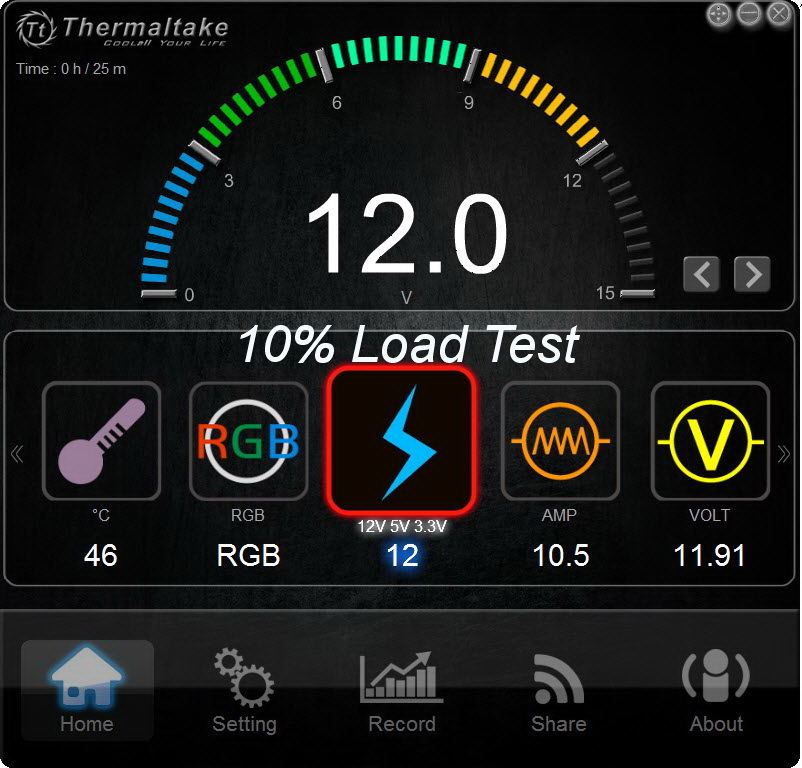
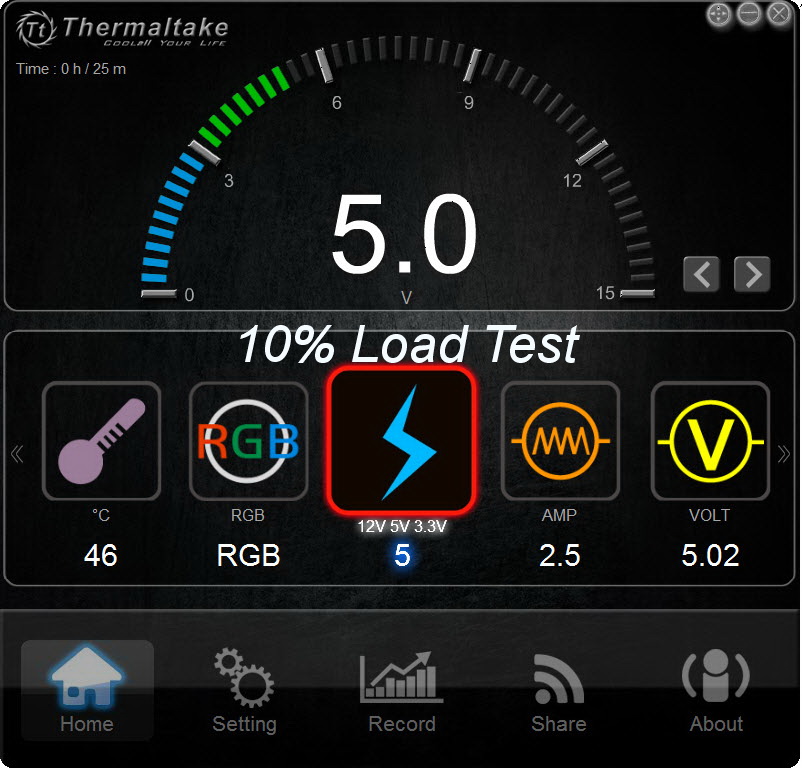
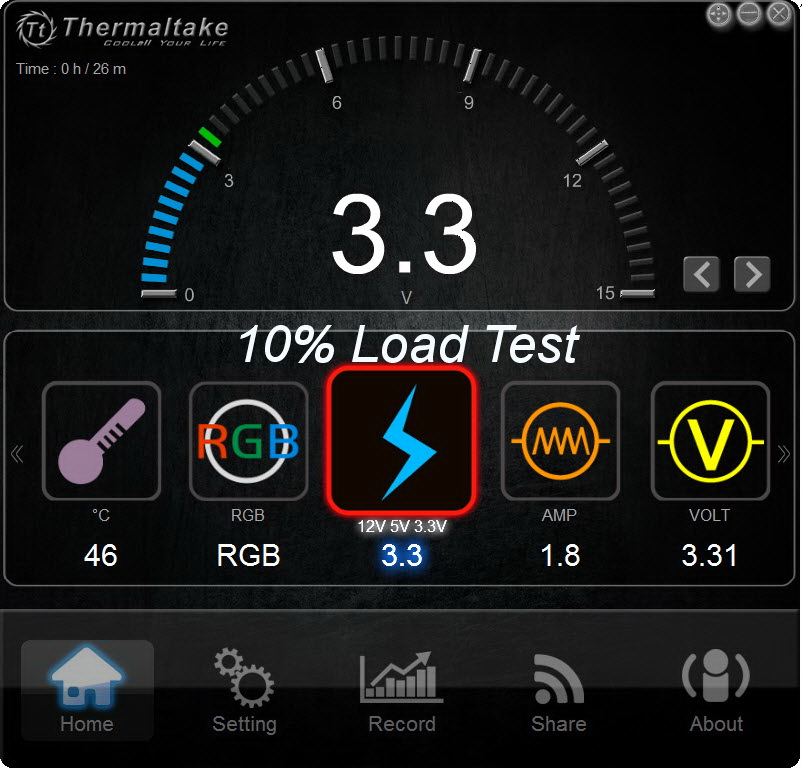

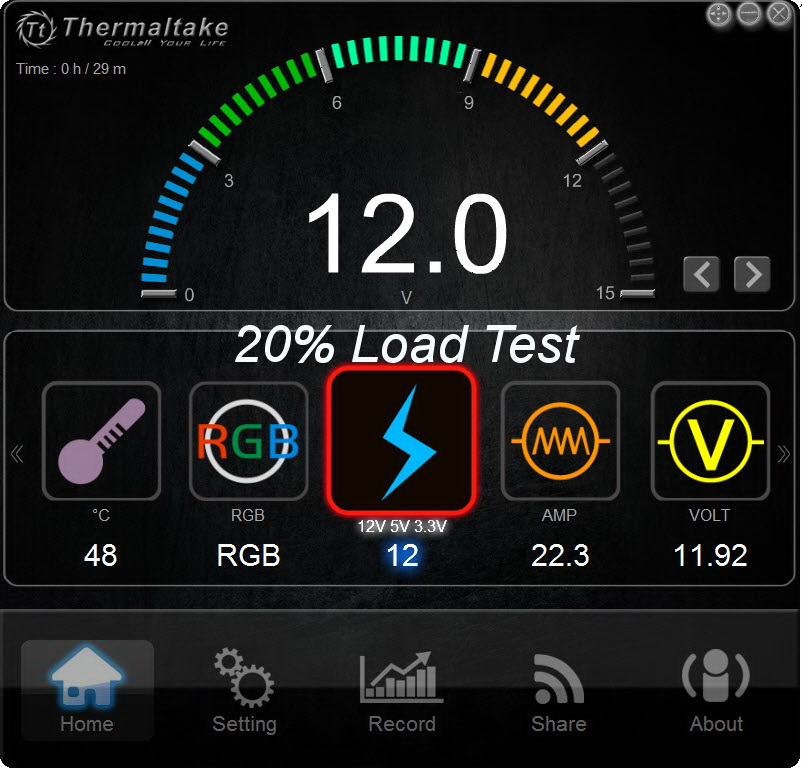
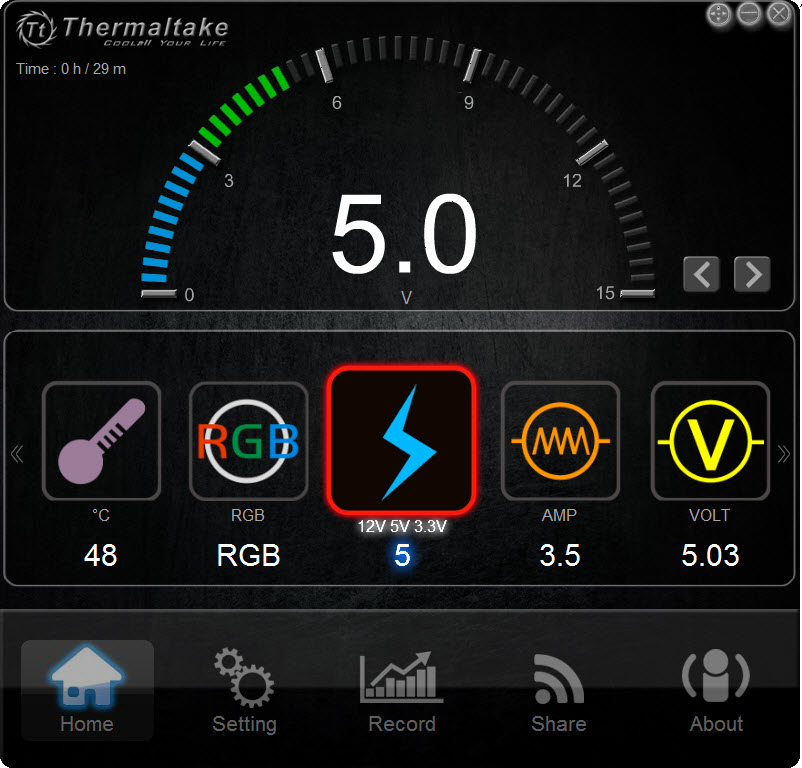
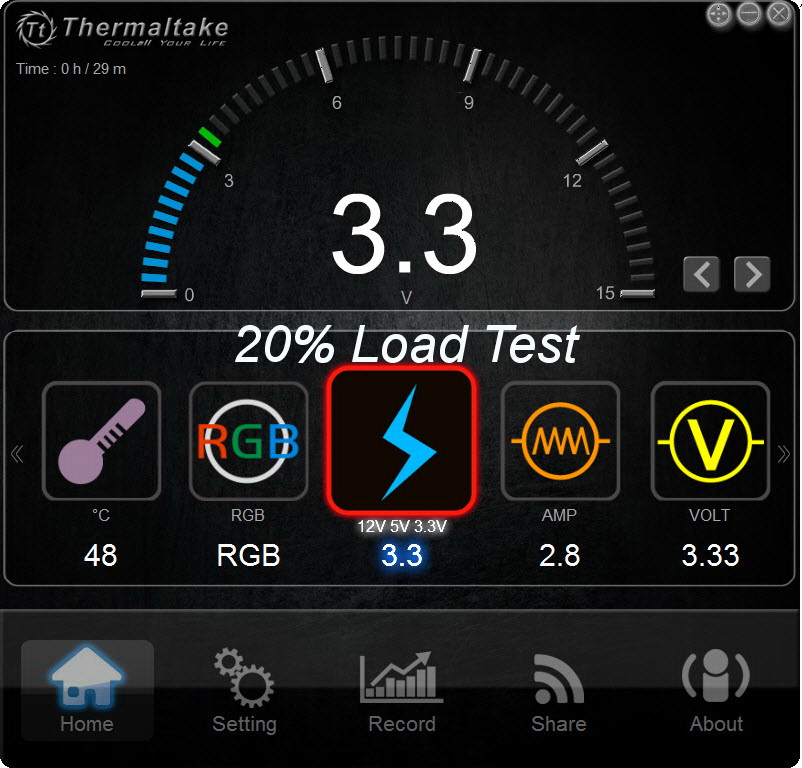
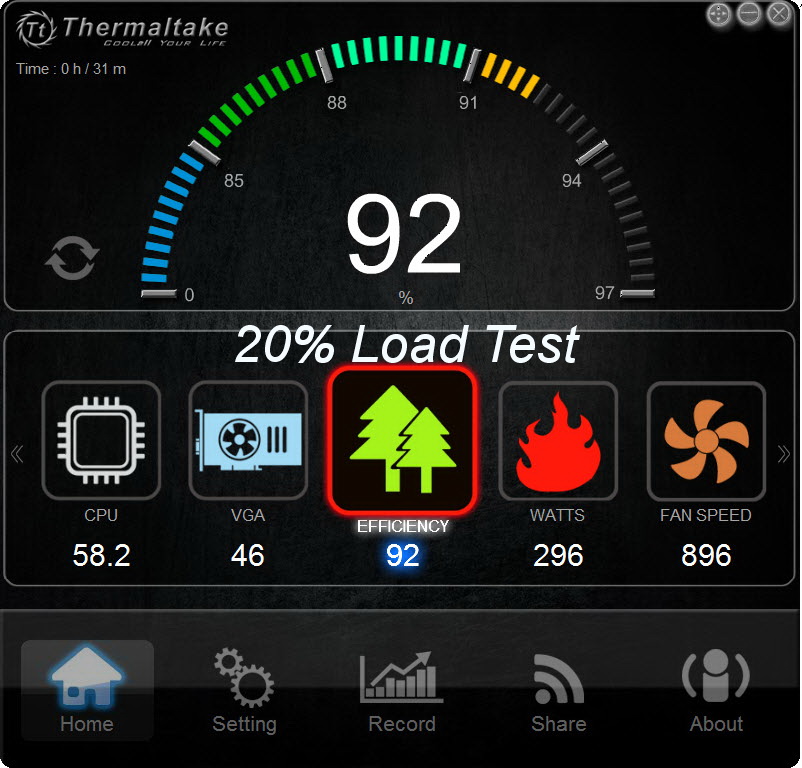

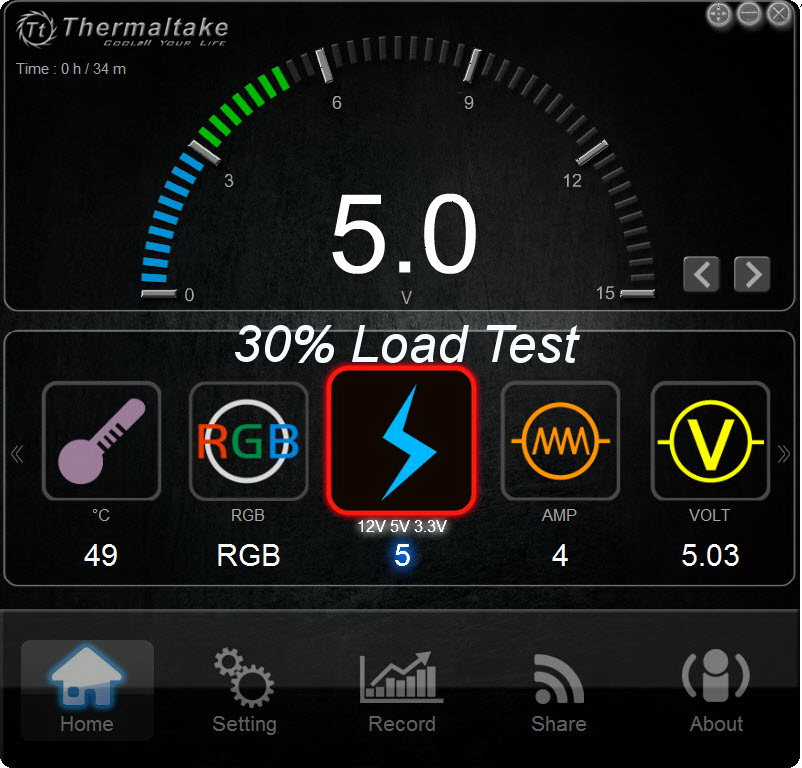
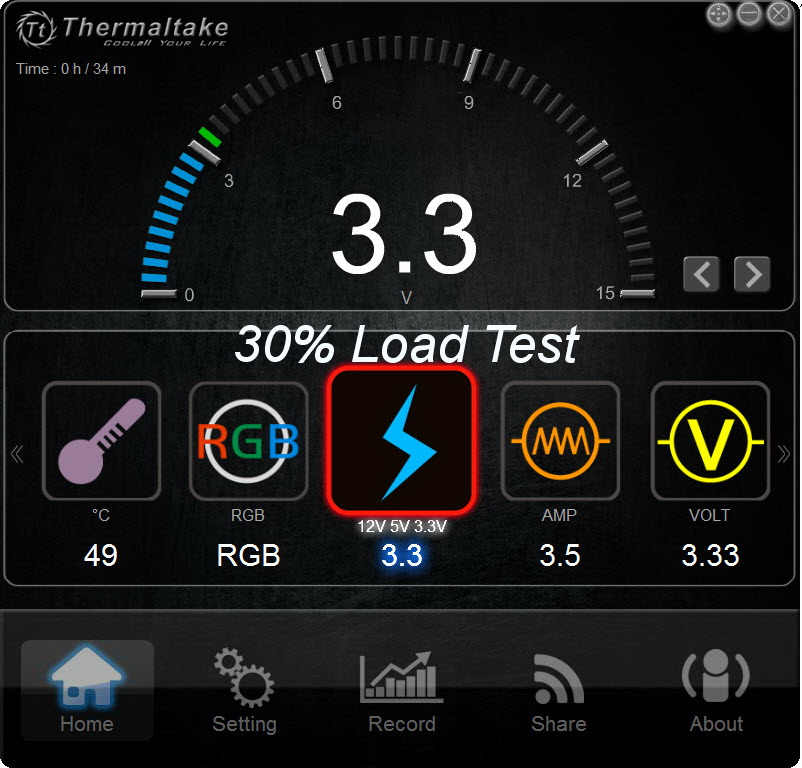
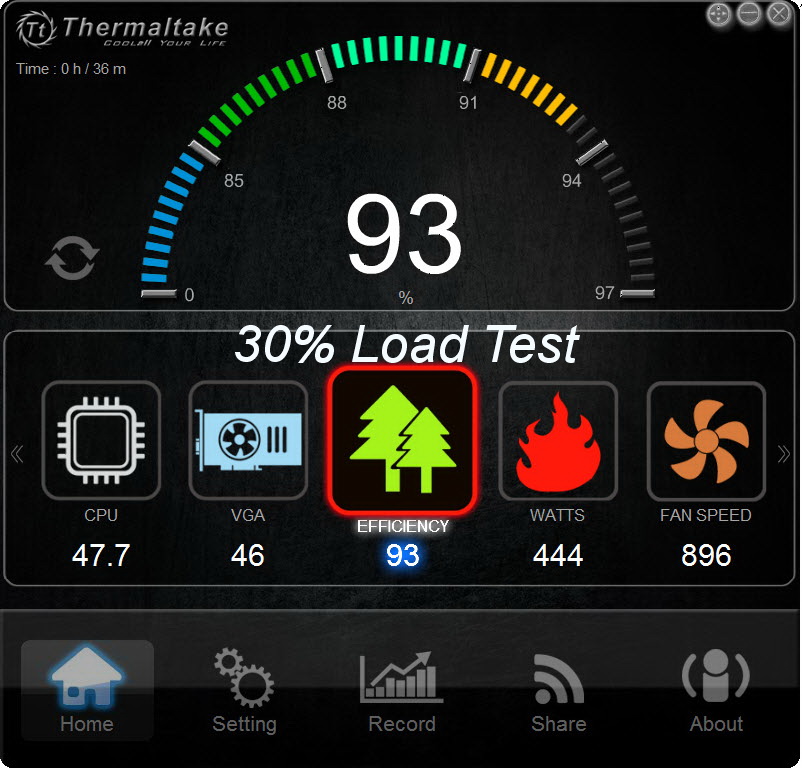
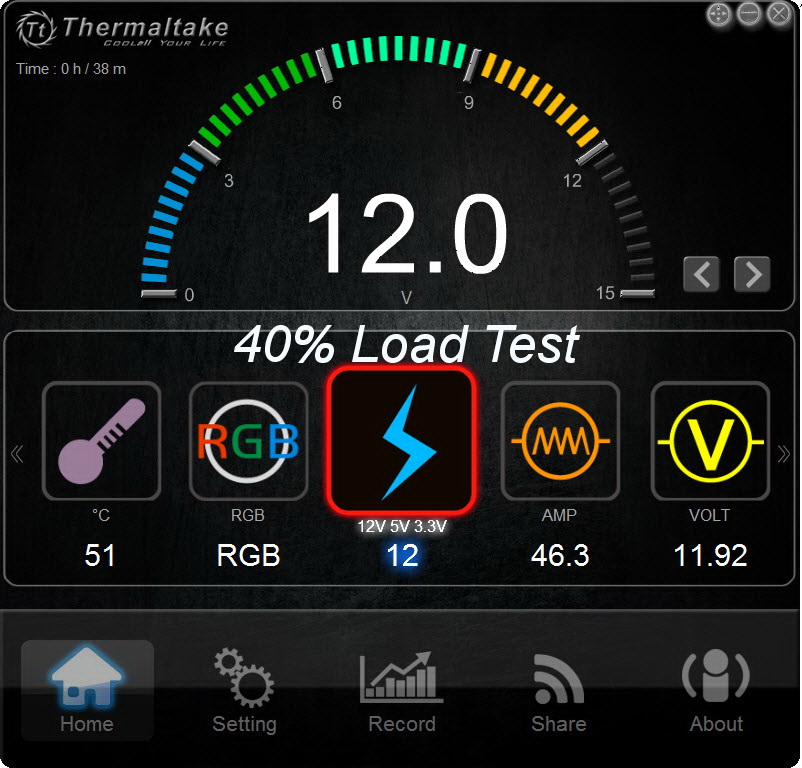
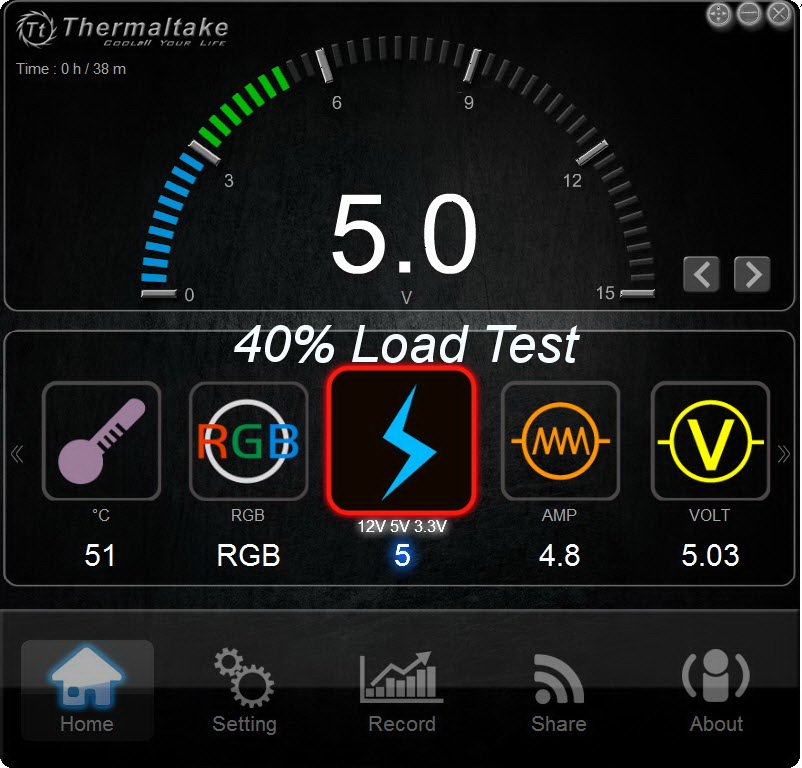
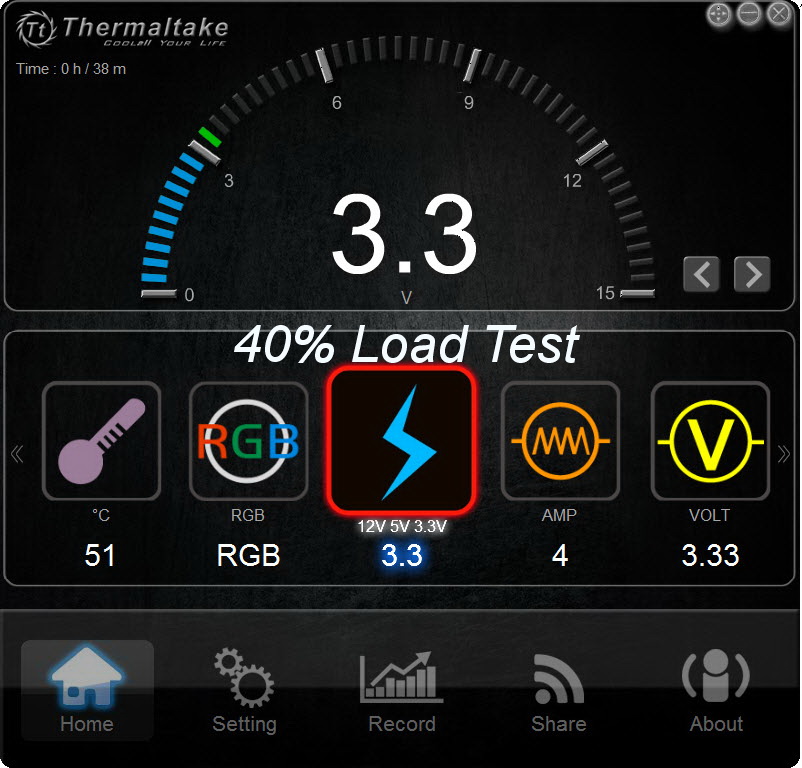
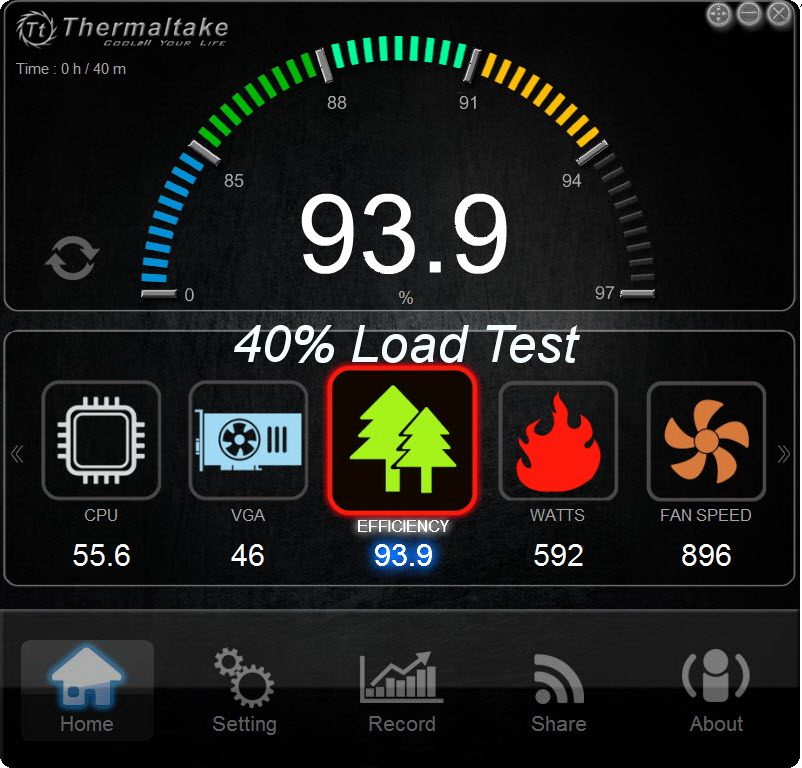
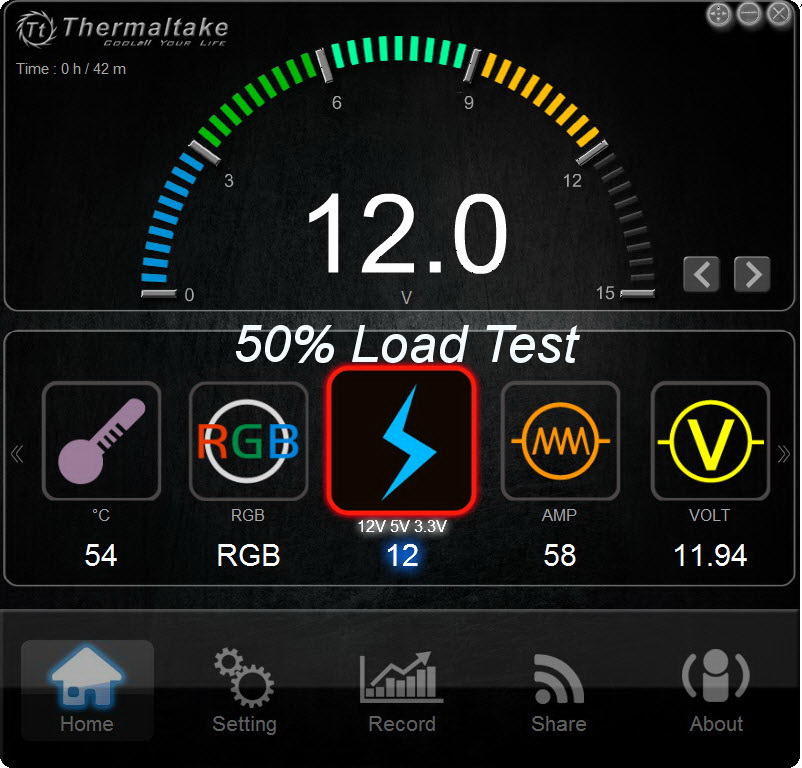
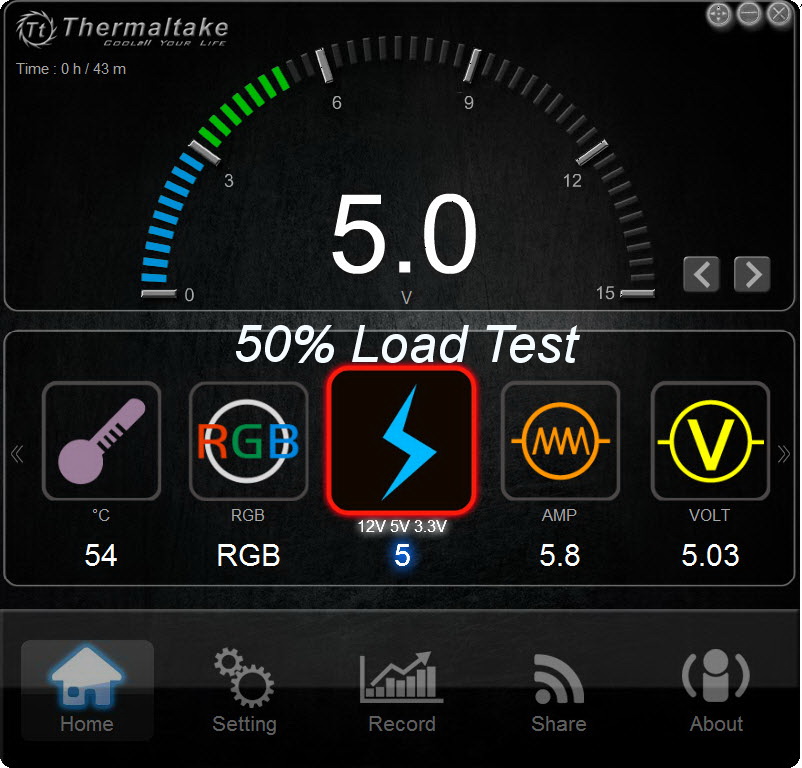
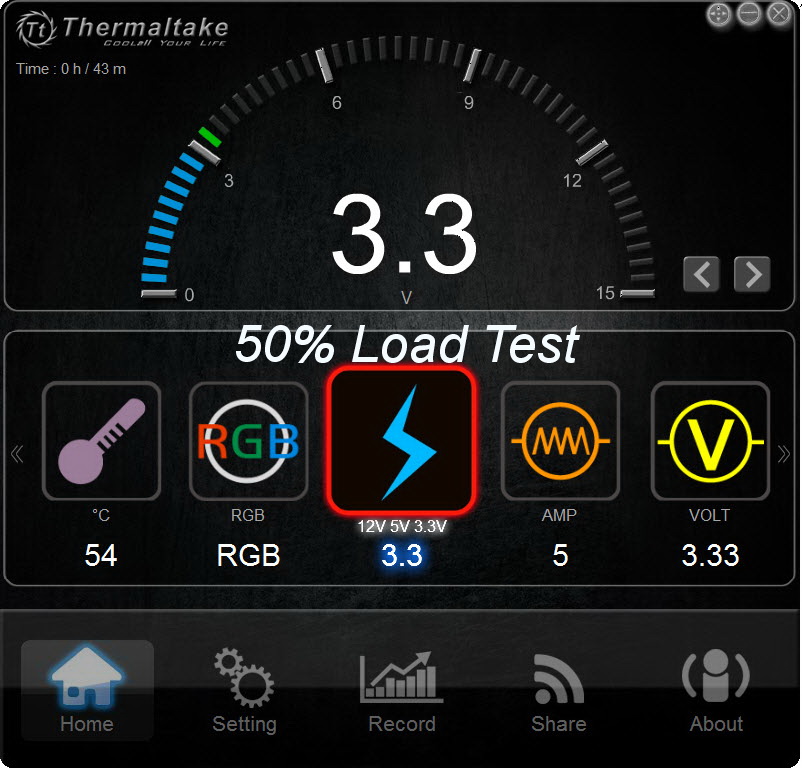
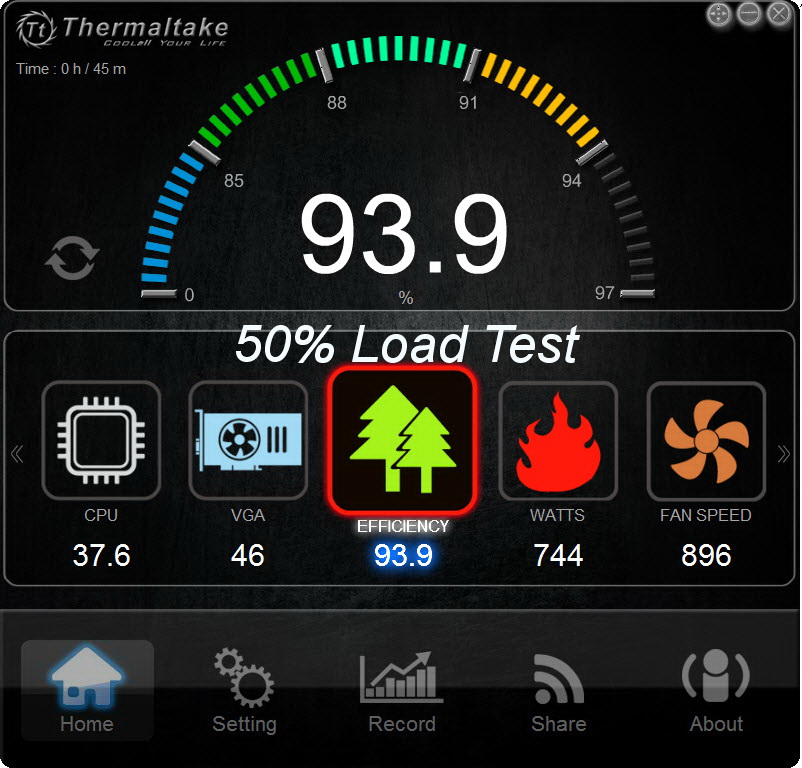
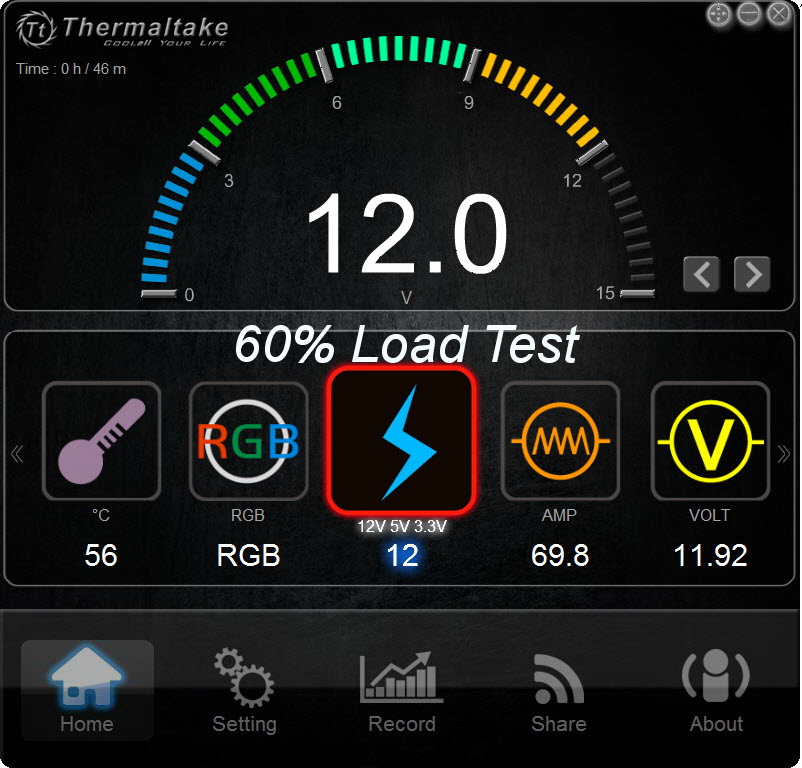
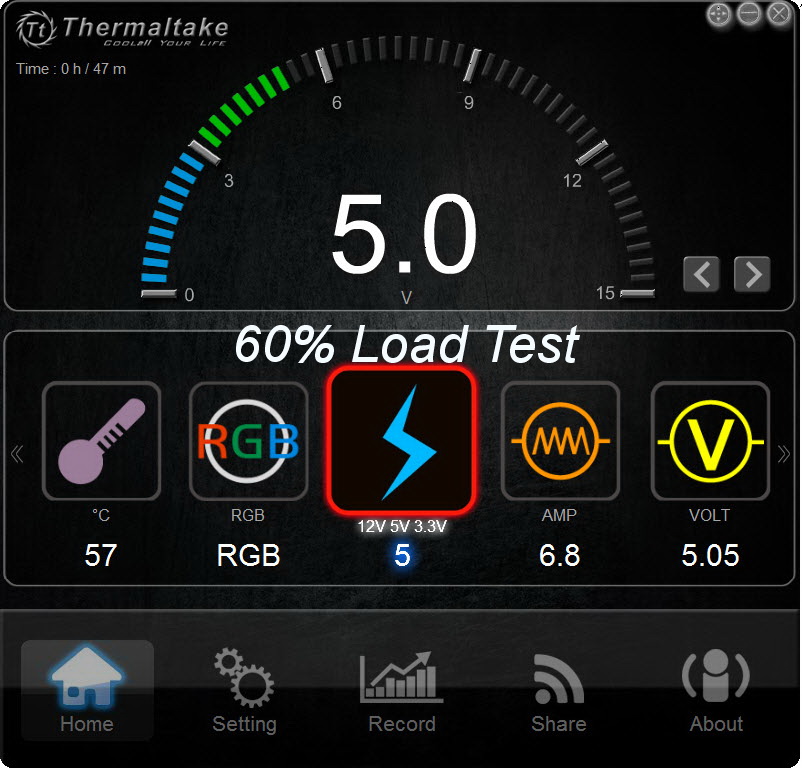
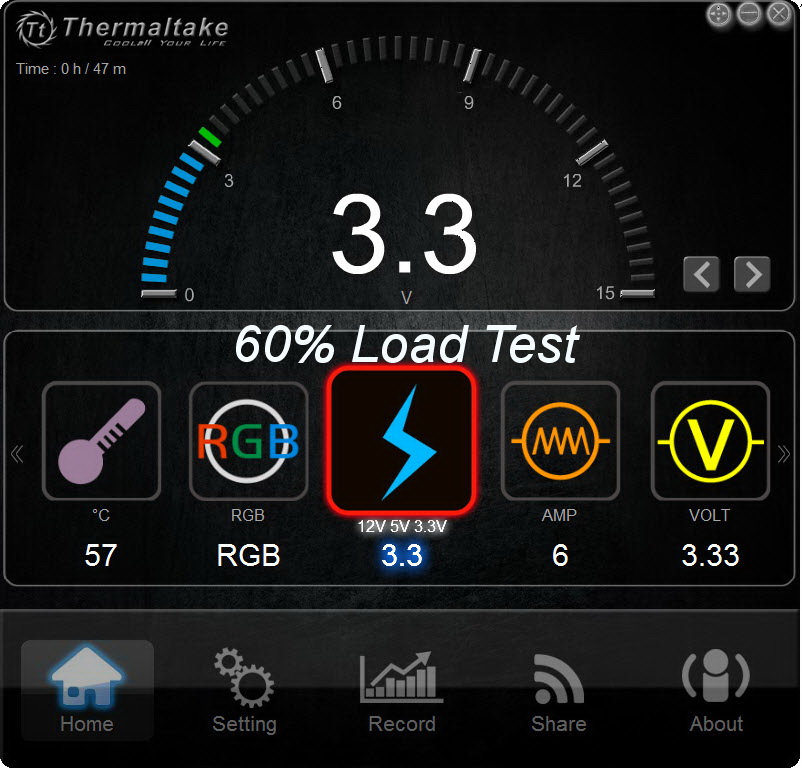
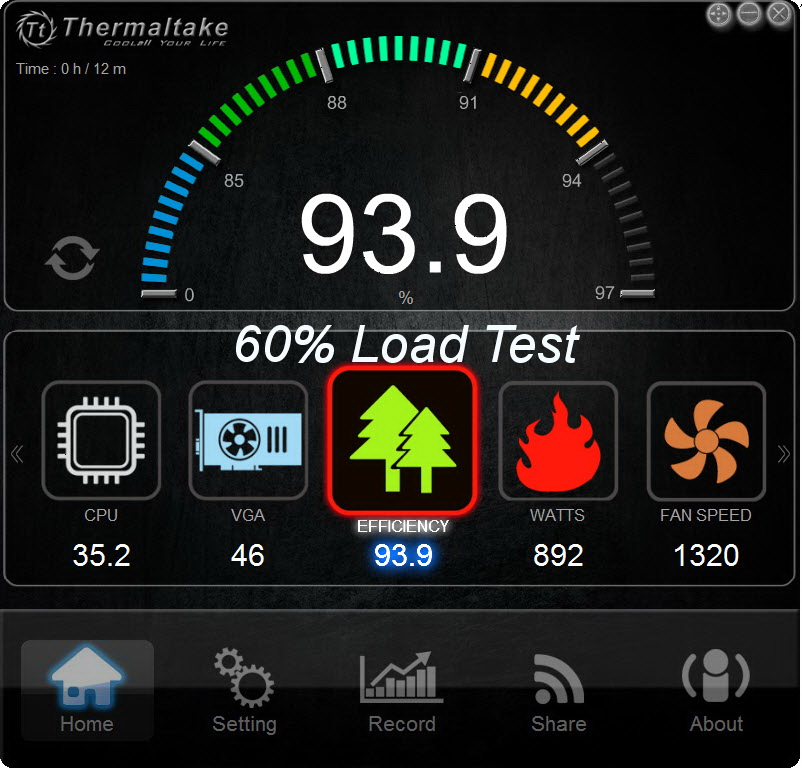
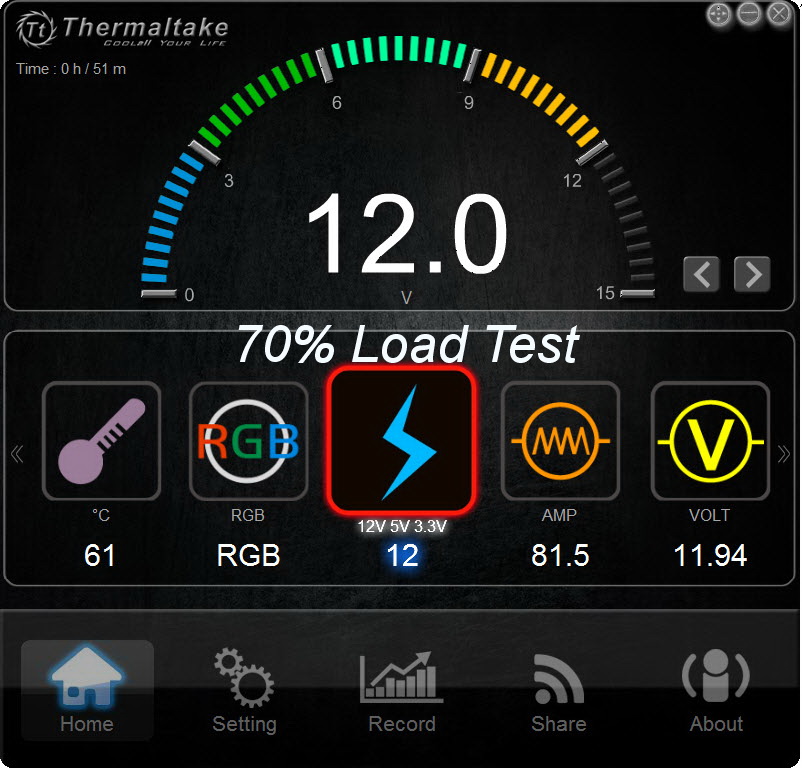
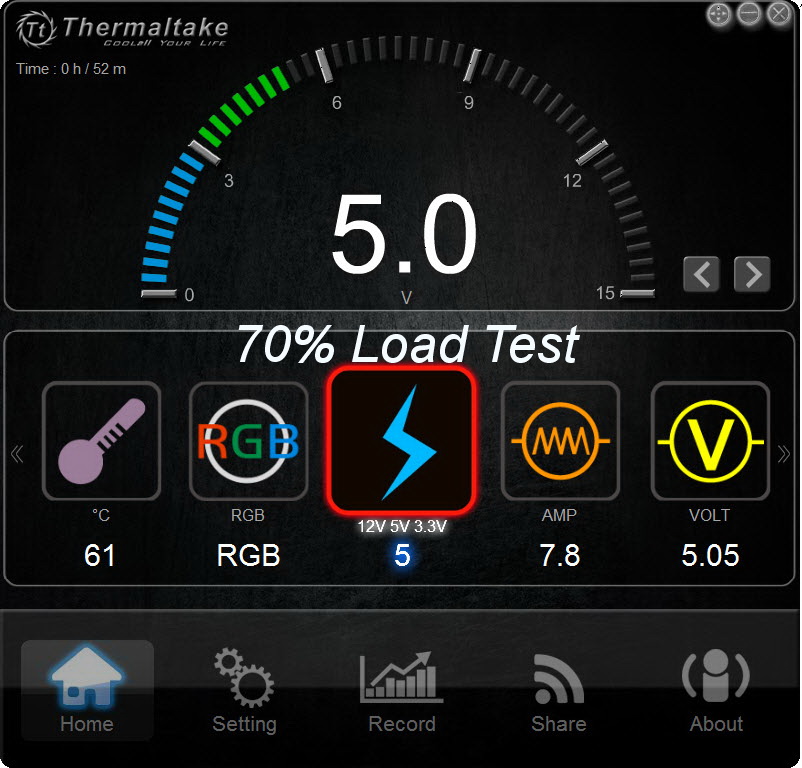
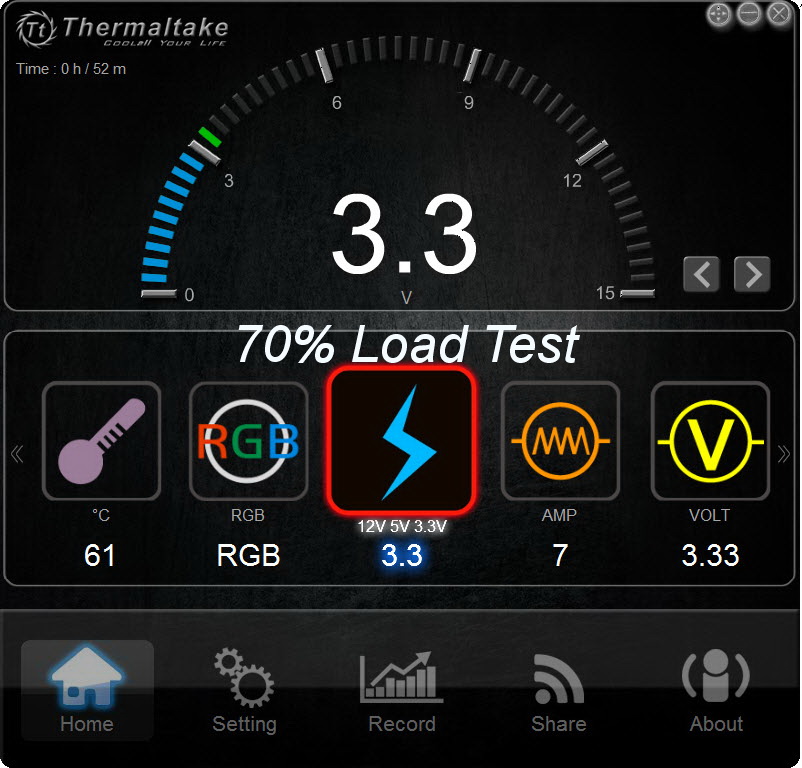
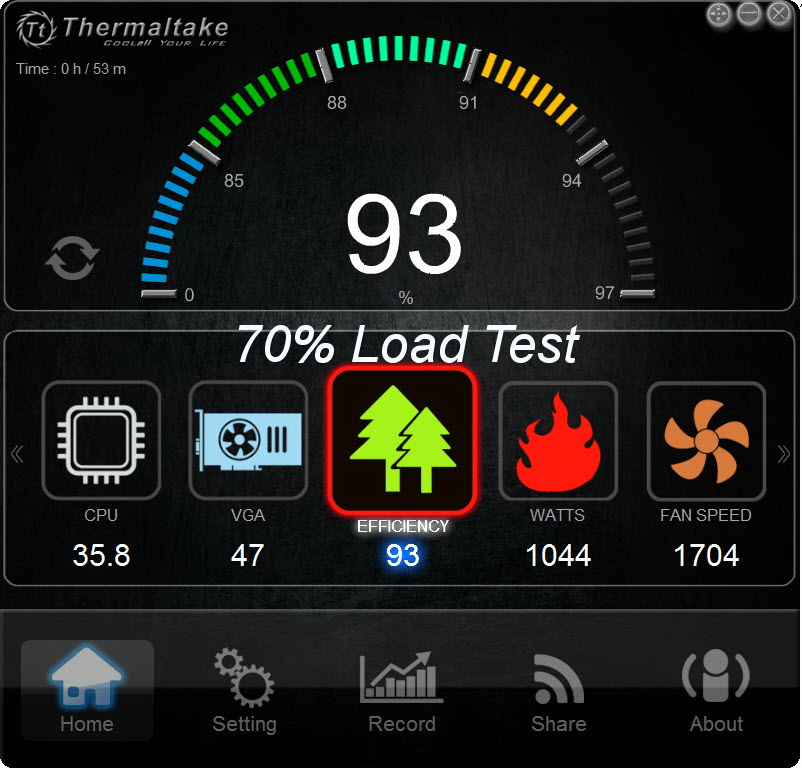
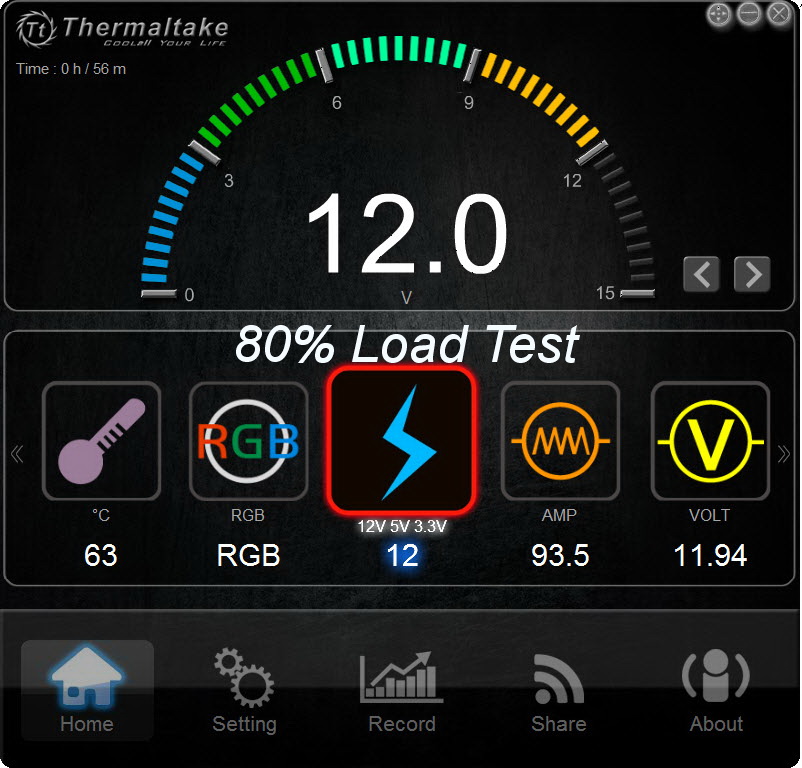
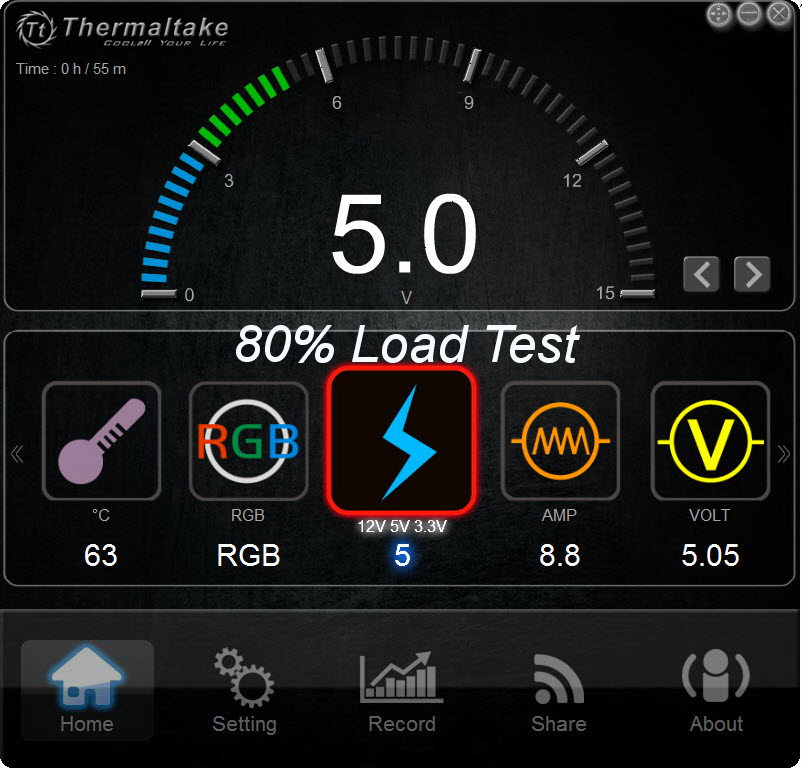
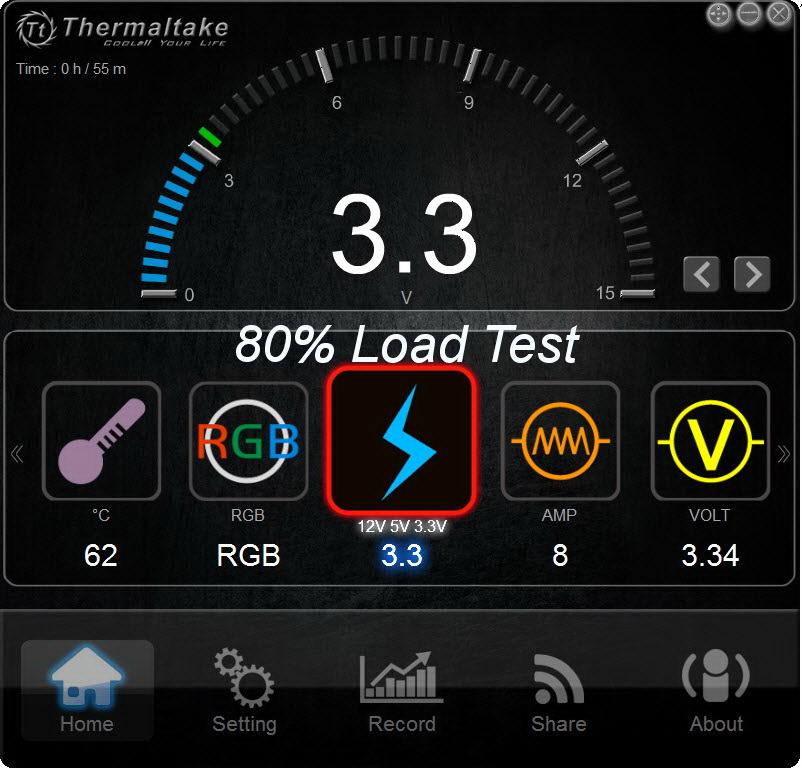
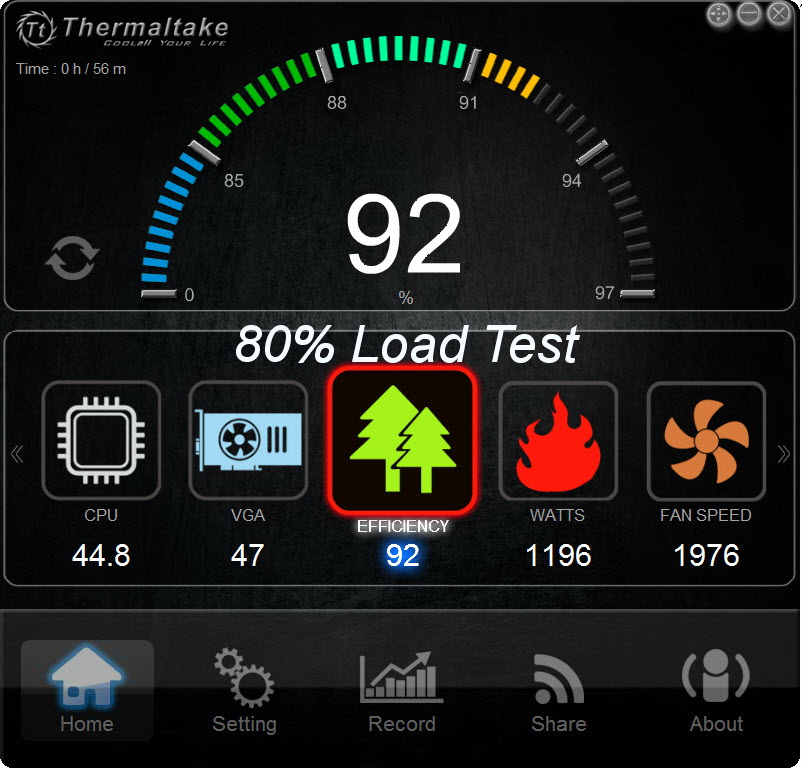

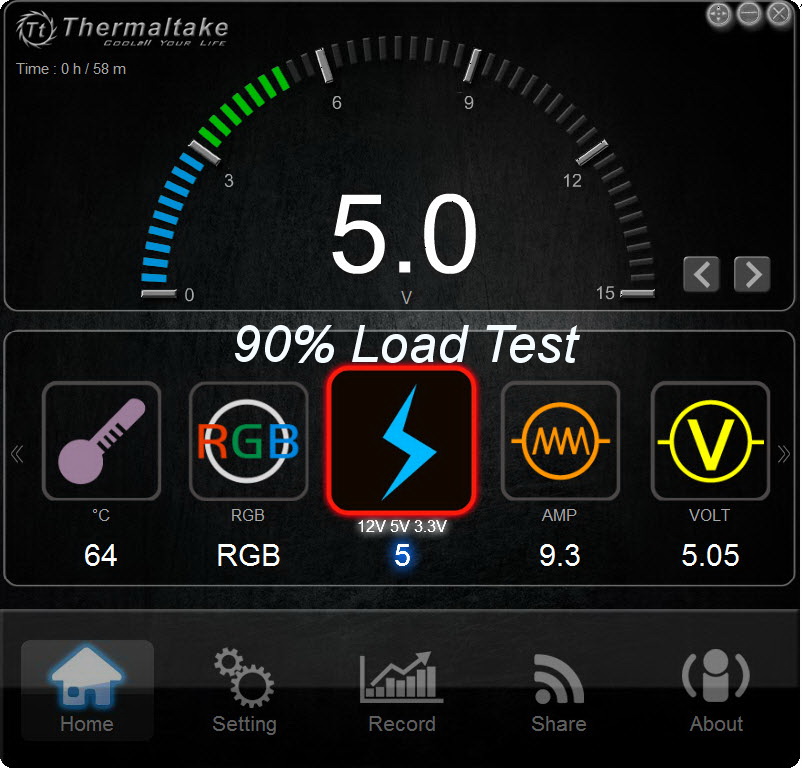
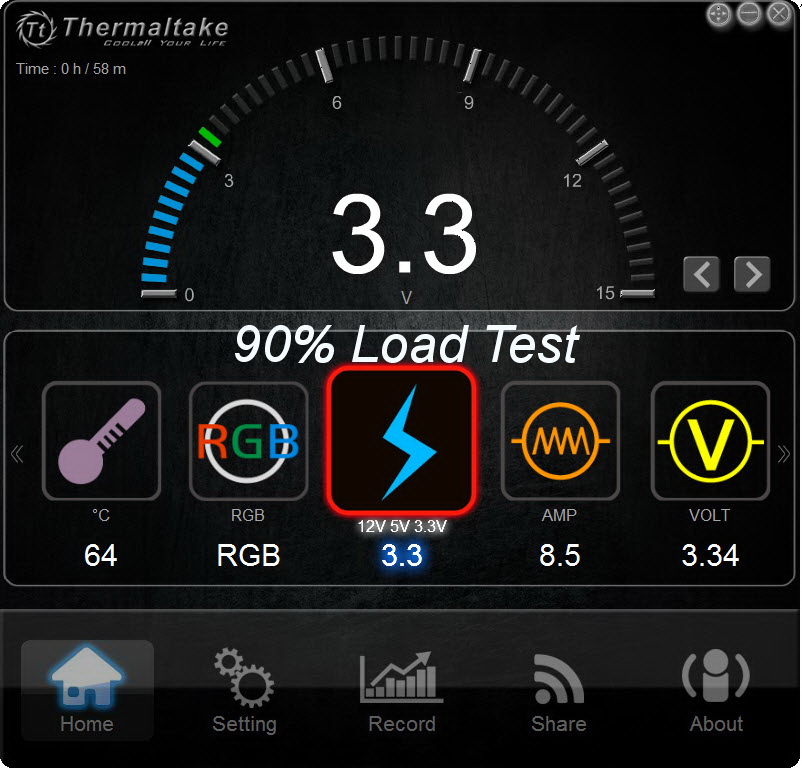
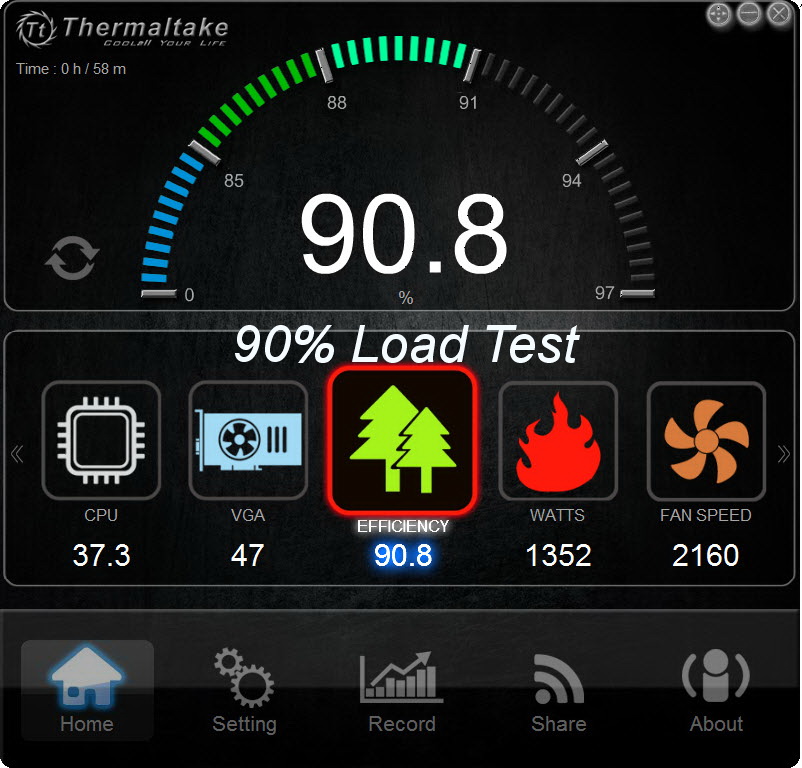
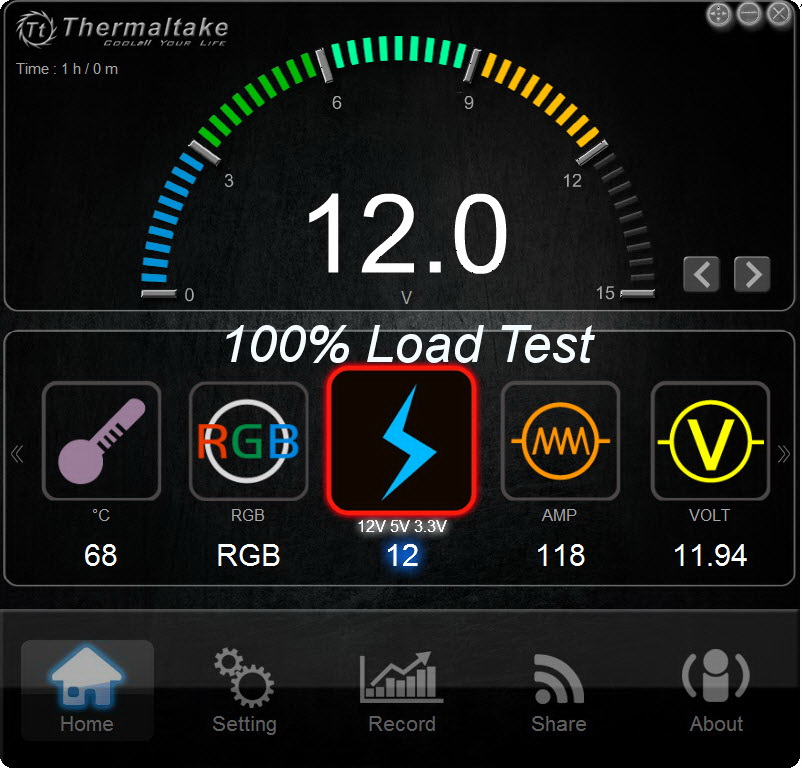
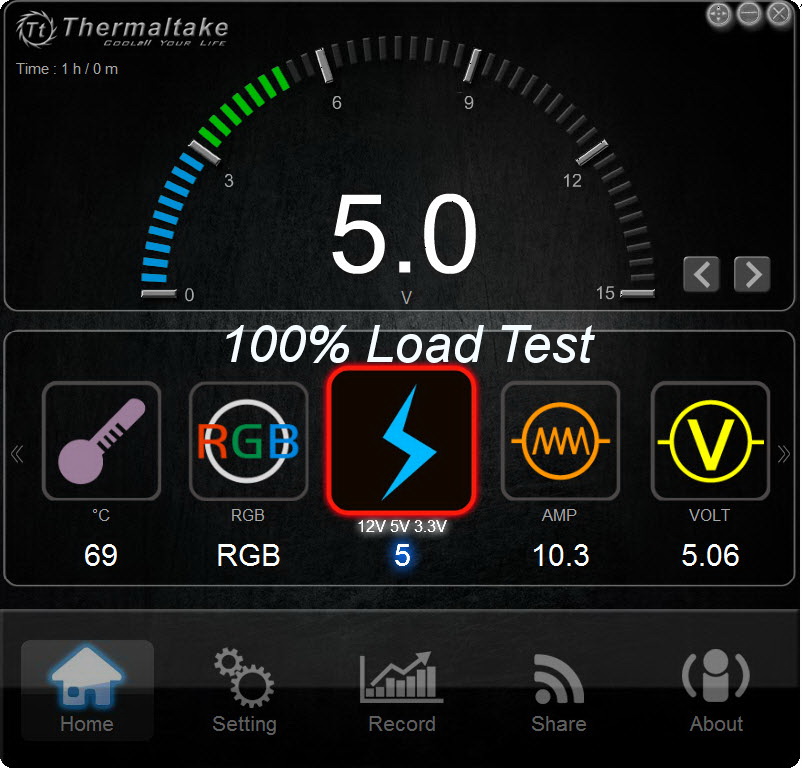
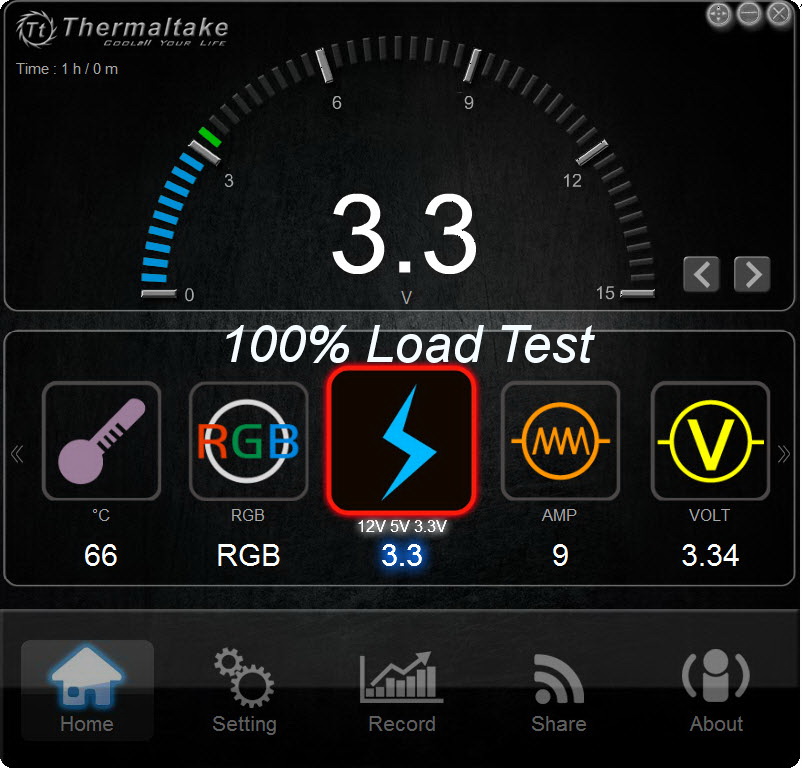

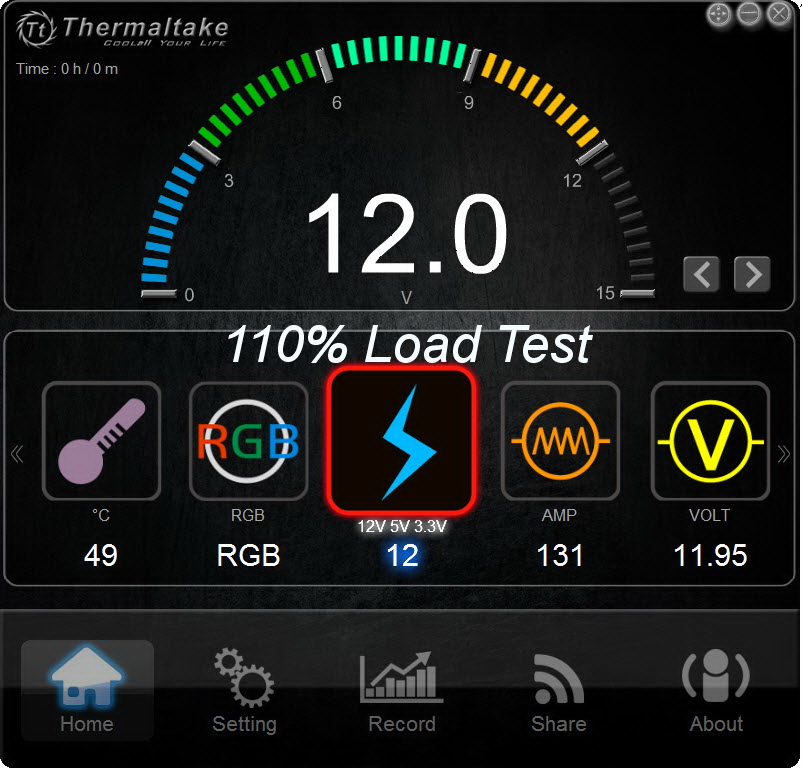
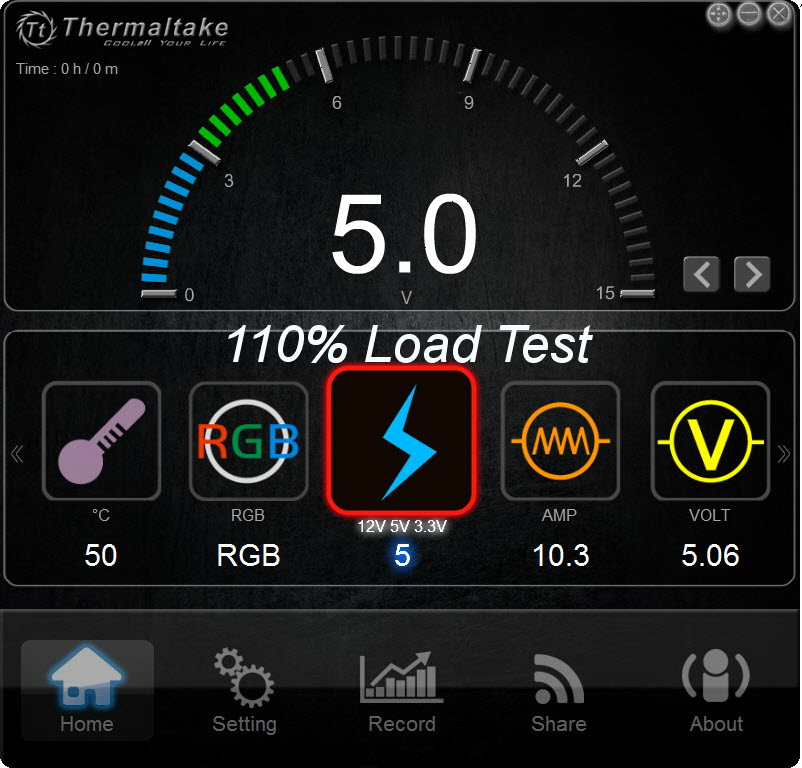
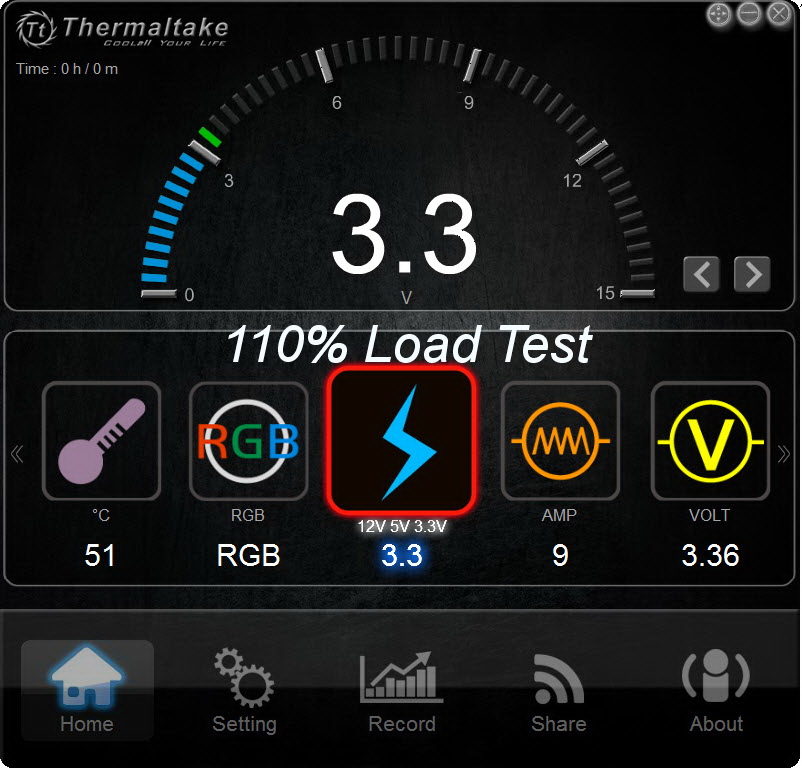
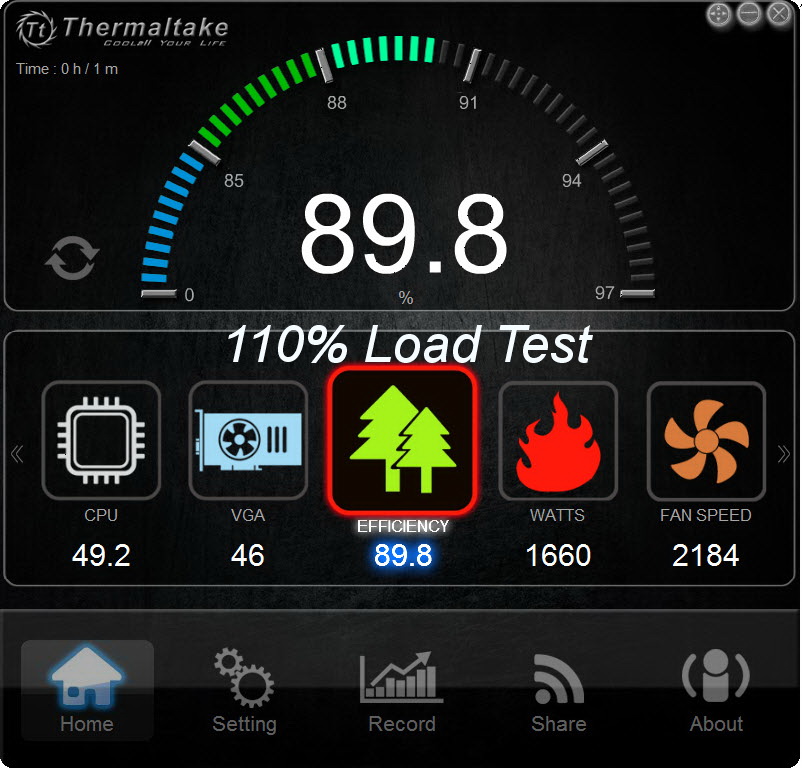
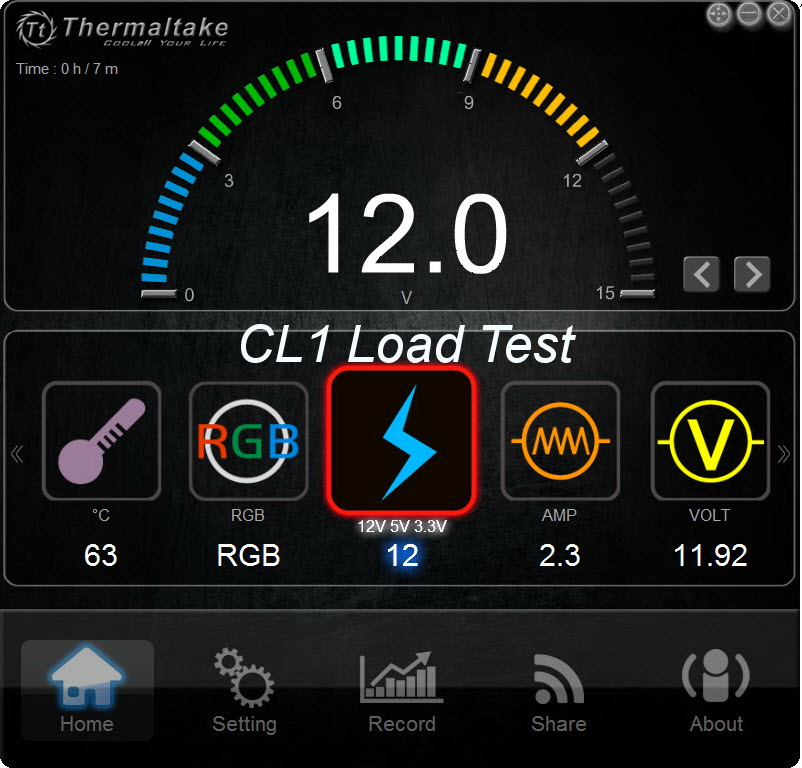
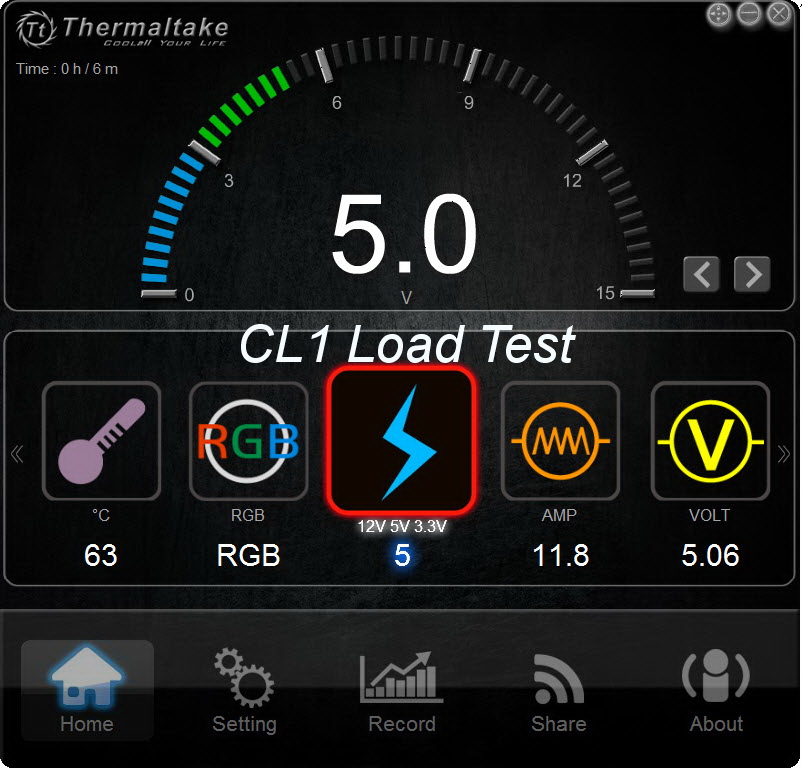
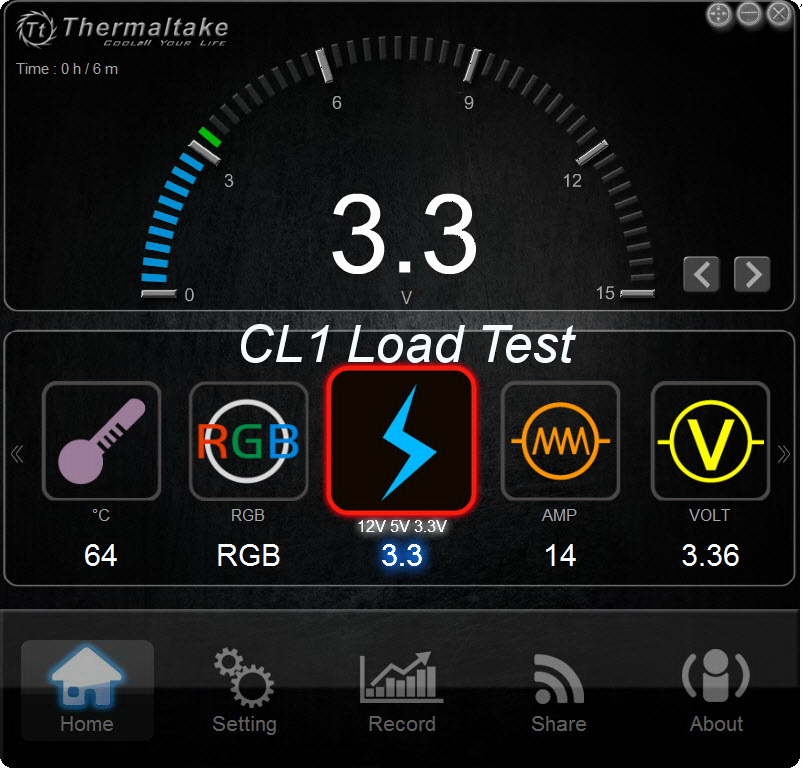
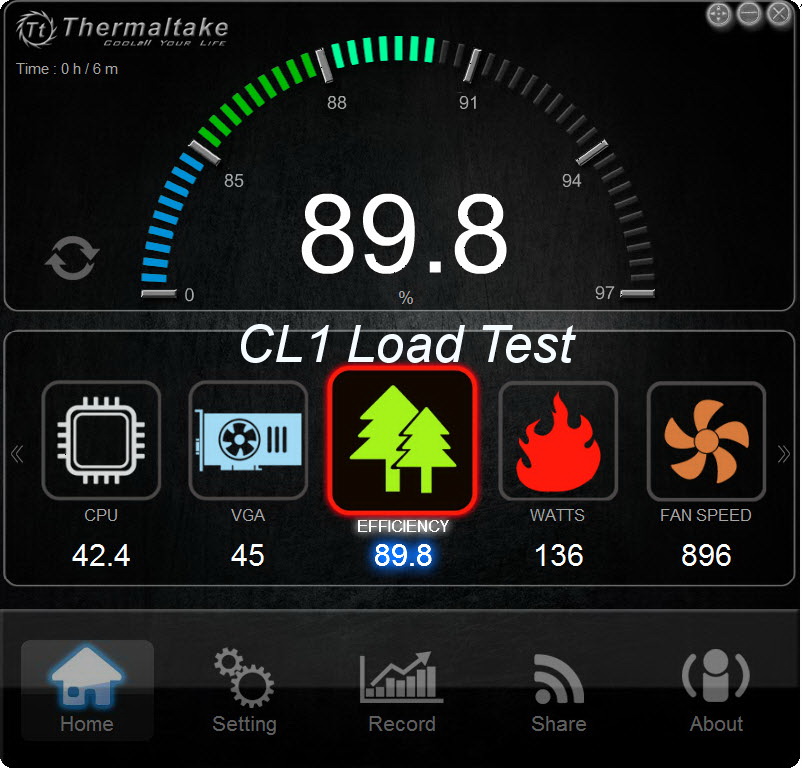
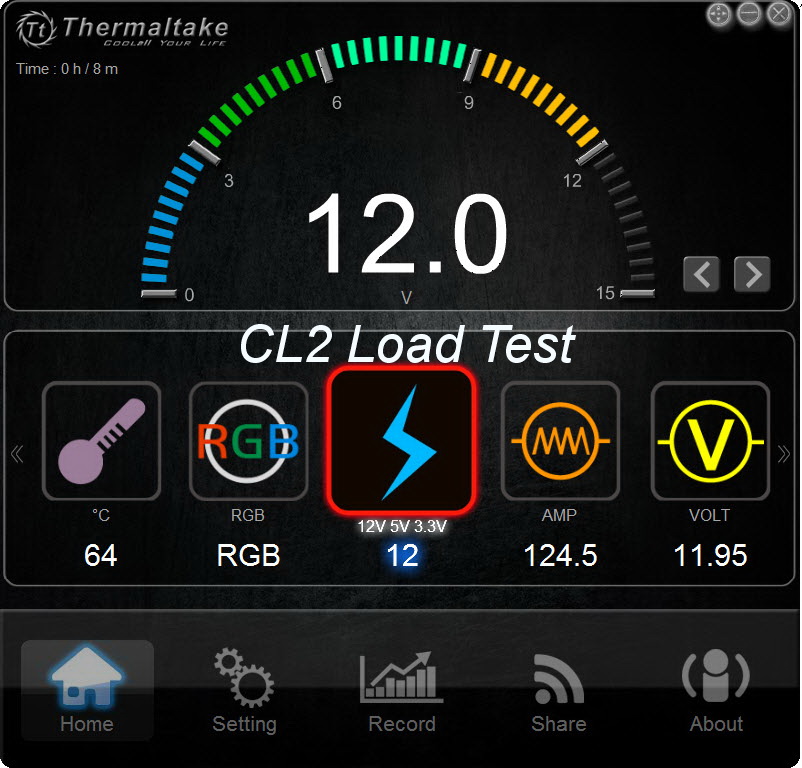
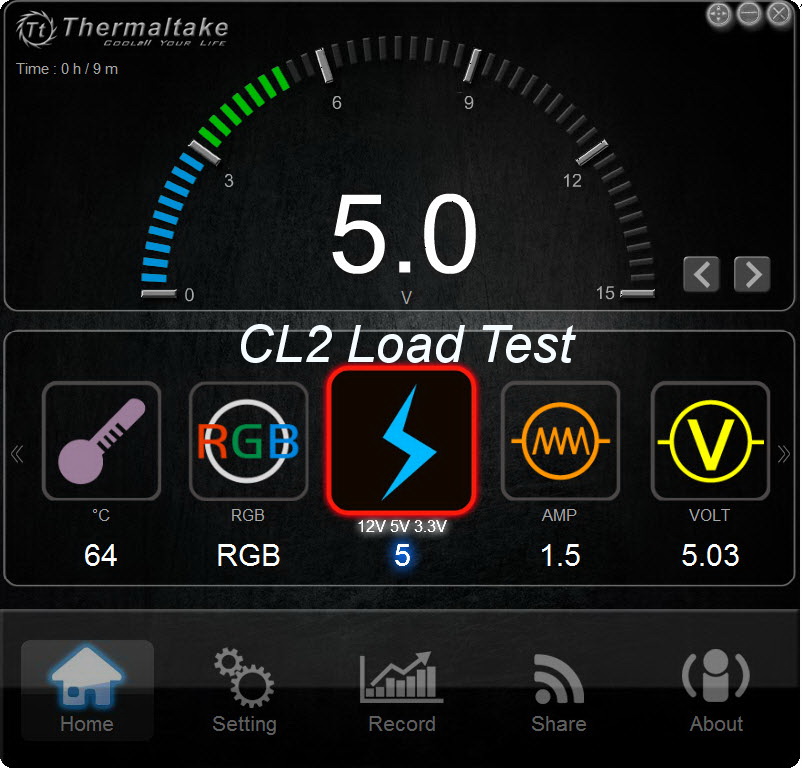
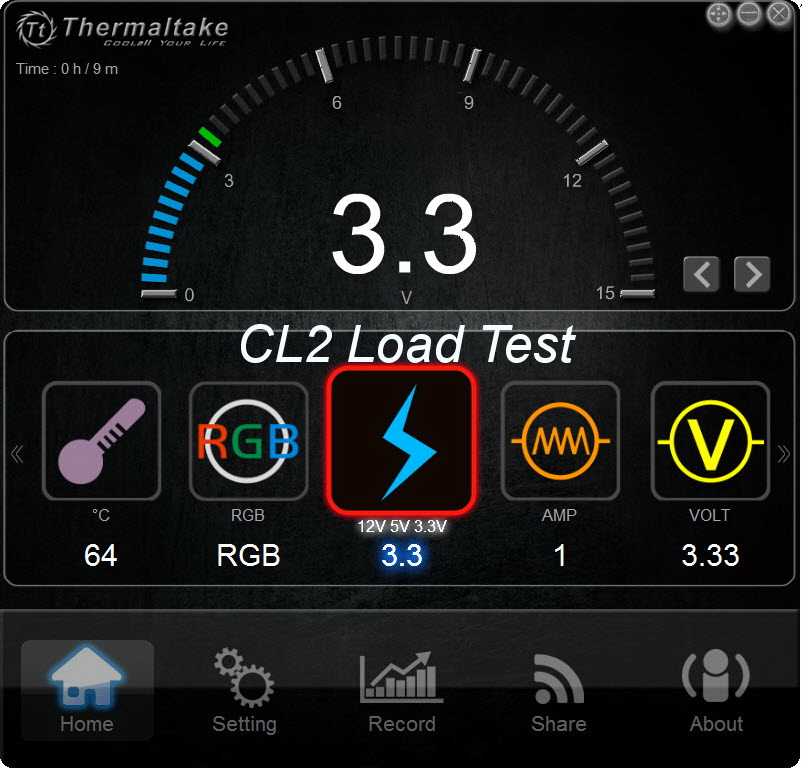
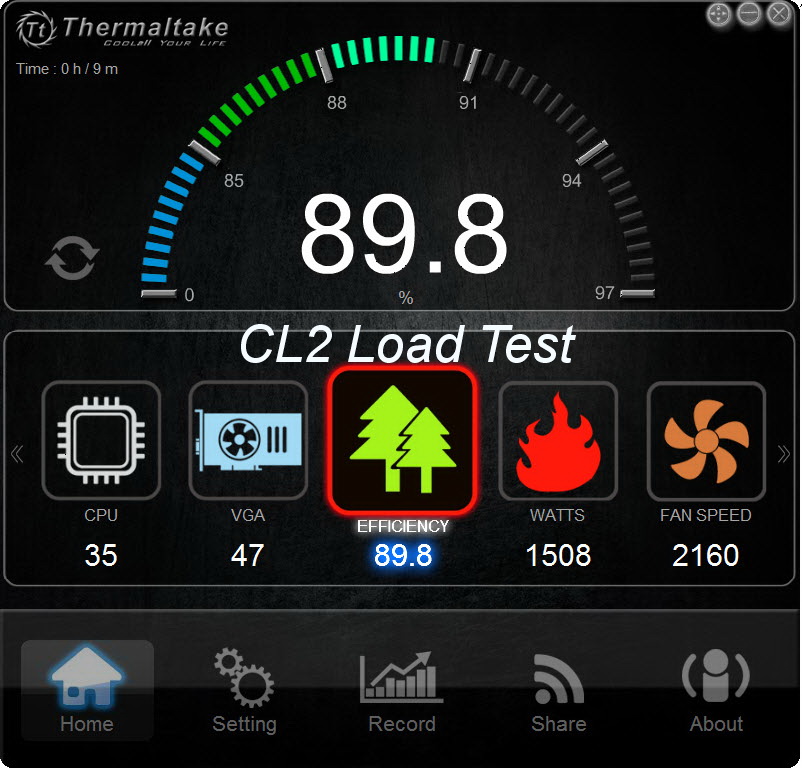
The efficiency readings aren't accurate, as you can see in the screenshots above.
A temperature warning popped up when the program noticed we were pushing the PSU hard.
Current page: Load Regulation, Hold-Up Time, And Inrush Current
Prev Page A Look Inside And Component Analysis Next Page Efficiency, Temperature And Noise
Aris Mpitziopoulos is a contributing editor at Tom's Hardware, covering PSUs.
-
spat55 So basically a poor performing PSU at this price point and the only good thing is a RGB fan I won't see because my PSU is always face down and preferably under a PSU cover, okay got it.Reply -
g-unit1111 What's the point of having an RGB ring on a bottom mounted PSU where nobody will see the fan anyways? :??:Reply
Also those cables - the word "eyesore" comes to mind! I would be replacing those with some custom ones ASAP! :ouch: -
spat55 Reply18628558 said:What's the point of having an RGB ring on a bottom mounted PSU where nobody will see the fan anyways? :??:
Also those cables - the word "eyesore" comes to mind! I would be replacing those with some custom ones ASAP! :ouch:
Yeah it's just a crap unit which is hoping the kids orgasm over those RGB lighting, it's doing my head in but I'm sure it'll soon become mainstream then die. -
powernod Extremely dissapointed by Thermaltake.Reply
Only at the TPG-1250D-T they used the new & excellent CST platform by CWT.
For all the other wattage models so far, ( 850 & 1500watt ) they used mediocre platforms by Enhance.
I had high expectations for Tt's new line of PSUs, but they were proven futile. -
Virtual_Singularity Thanks for another thorough, excellent, psu review, great job Aris. Disappointed by TT, as well. That is one flawed, less than mediocre (esp for the price) unit, OEM'd to Enhance by another predictable 3rd party company. Some pretty lights on the fan and it's 1600 watt helm of their "flagship" series moniker is supposed to justify that $430 pricetag? Fails to meet minimum atx specs in several areas, hold up time for such an expensive unit is also unacceptable. Similar to the MasterWatt Maker, it can't hope to compete with similar units from their competitors, which are lower in price, better in efficiency and overall specs.Reply -
Nuckles_56 The 12V CL1 was certainly one of the more interesting waveforms I've seen in a while. But overall I'm pretty disappointed in Thermaltake for producing such a over priced under performing PSUReply -
Br1414 Typo? 16 amps is the max legal load on a 20 amp 120v plug, thus option A apparently. Option B appears to be the old wall A/C style 20 amp 240 volt plug. Both a t slot styles. So maybe you rig something, but more or less you need an electrician just to use this thing safely! I guess you got the money...Reply -
Valantar Individually sleeved cables in the traditional "ketchup and mustard" colours? Wow, that made me laugh. Out loud. Might be suitable to some kind of early 2000s retro theme build?Reply
Also, I love the pixelated 8-bit-ish thing you've got going on with the ripple graphs on page 9. Perhaps
Otherwise, this was pretty much as expected. A useless product (the world does not need more 1000W+ PSUs), with useless features (RGB in a place where it'll be invisible in 90+% of modern cases), at a useless price point. That it performs badly as well just adds icing to the turd.
